
Designated an Area of Outstanding Natural Beauty, the Cotswolds lie prettily between the Thames and the River Cherwell in the East to the Western Escarpment looking towards Wales.
It runs in the north towards Banbury and the M40 and to the south to Bath or even a little behond

The village of Burford is the gateway from London to the Cotswolds. No matter what my plans, each time I turn into Burford, I find myself grabbing my camera and happily walking up the High Street.
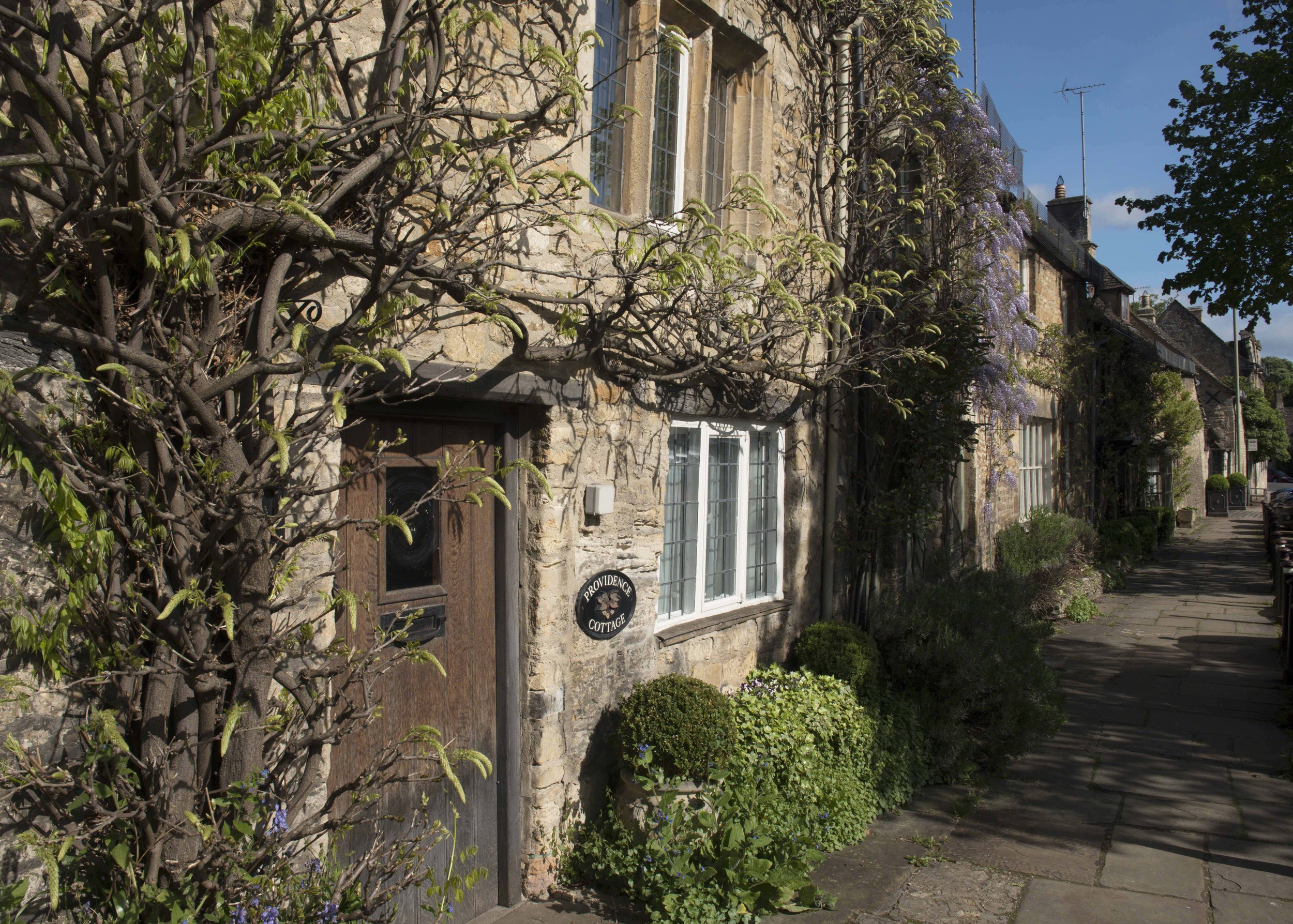
This row of houses at the top of the High Street are shown here on an early spring day.
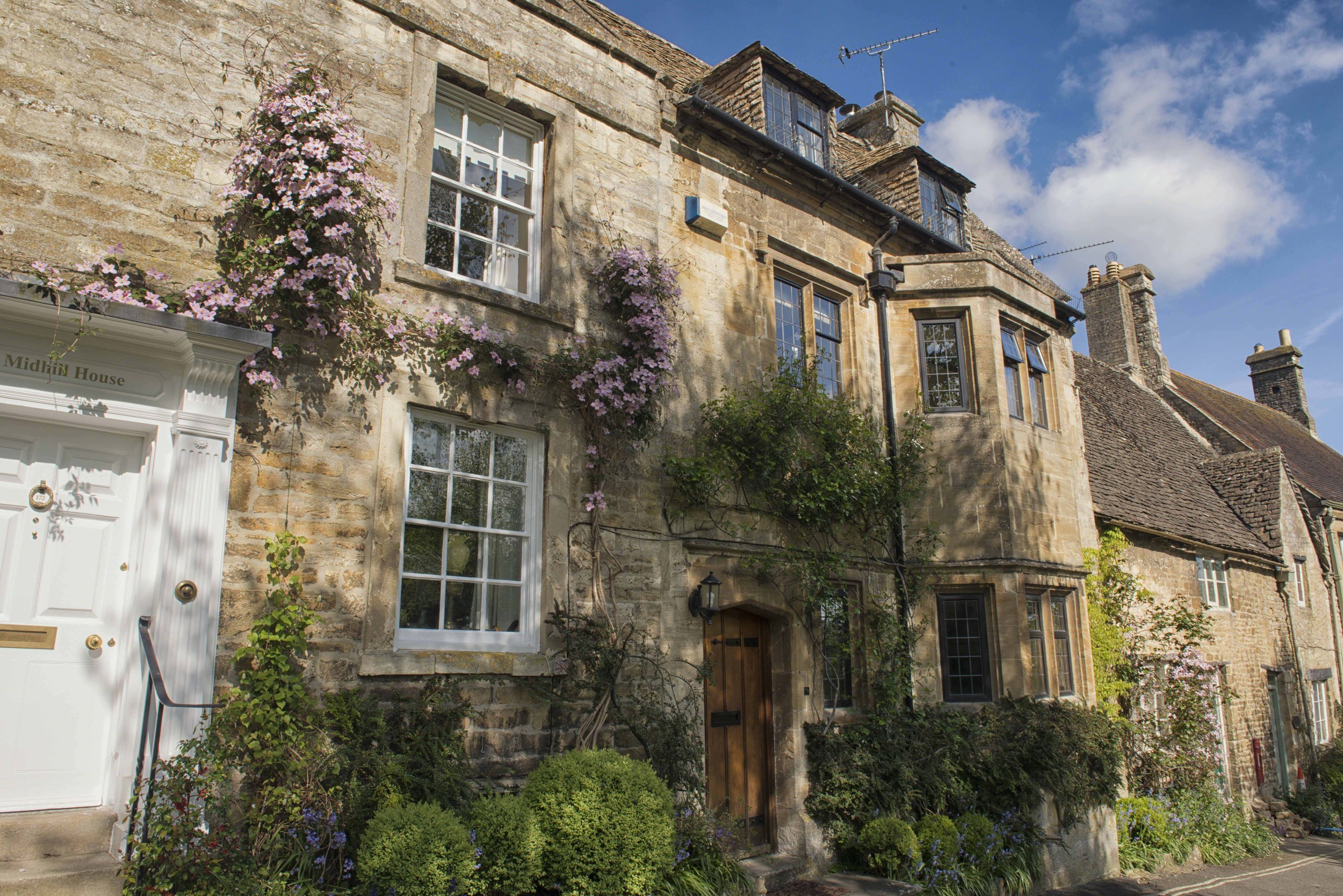
As spring advances, even these street-front English gardens become packed with color, as shown here in the soft pinks of climbing clematis.

A closer look at the pretty-in-pink clematis shows color that even direct sunshine can't daunt.

The green flowers of what I think are spurge or euphorbia are handsome in spring, contrasting so nicely with the inviting blue paint on the front window.
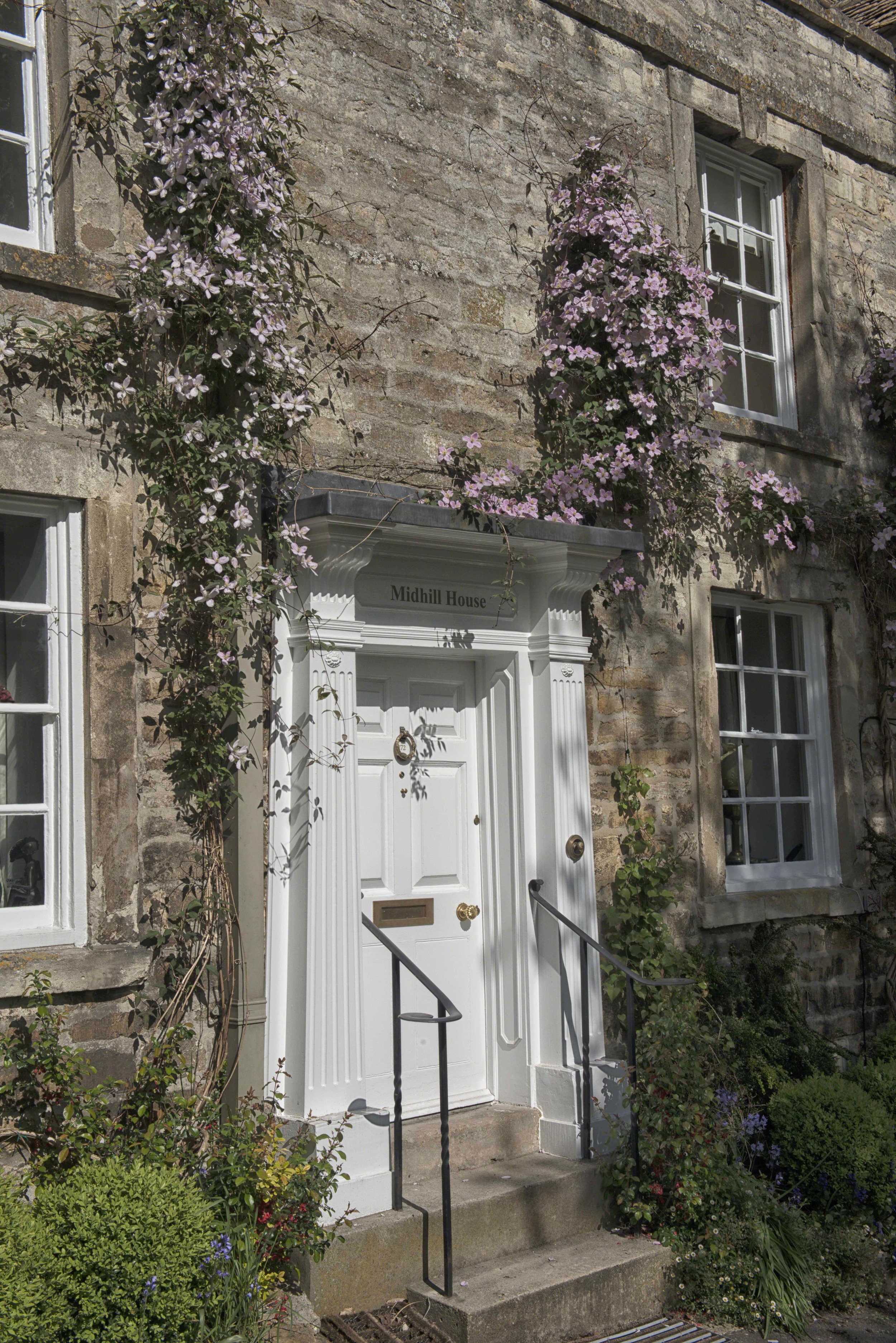
Doors always seem to say something about the people who live behind them. This handsome doorway is softened by the clematis.
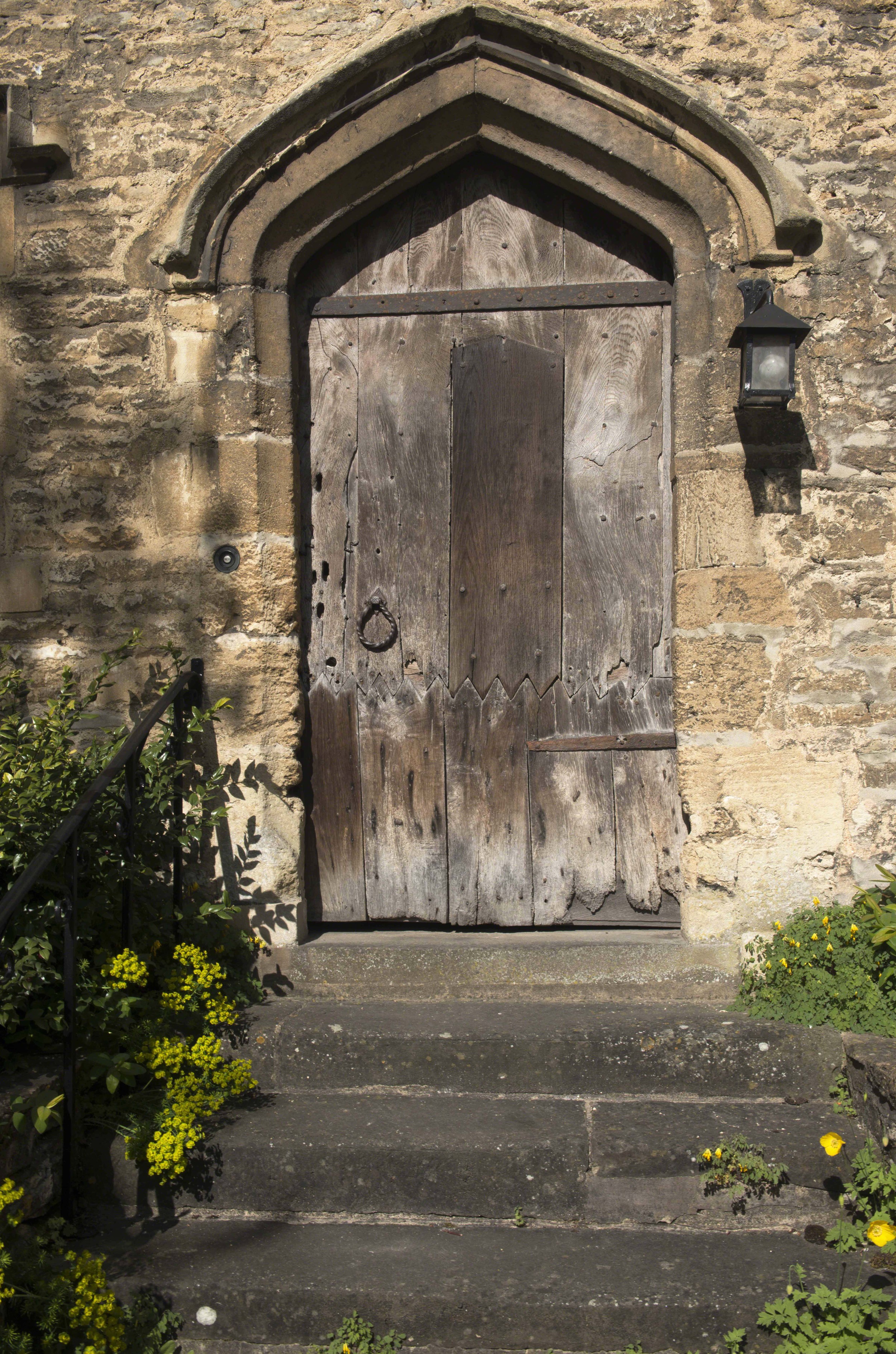
Here is an old door that has been treasured by its owners through the years and speaks of quiet natural warmth within.
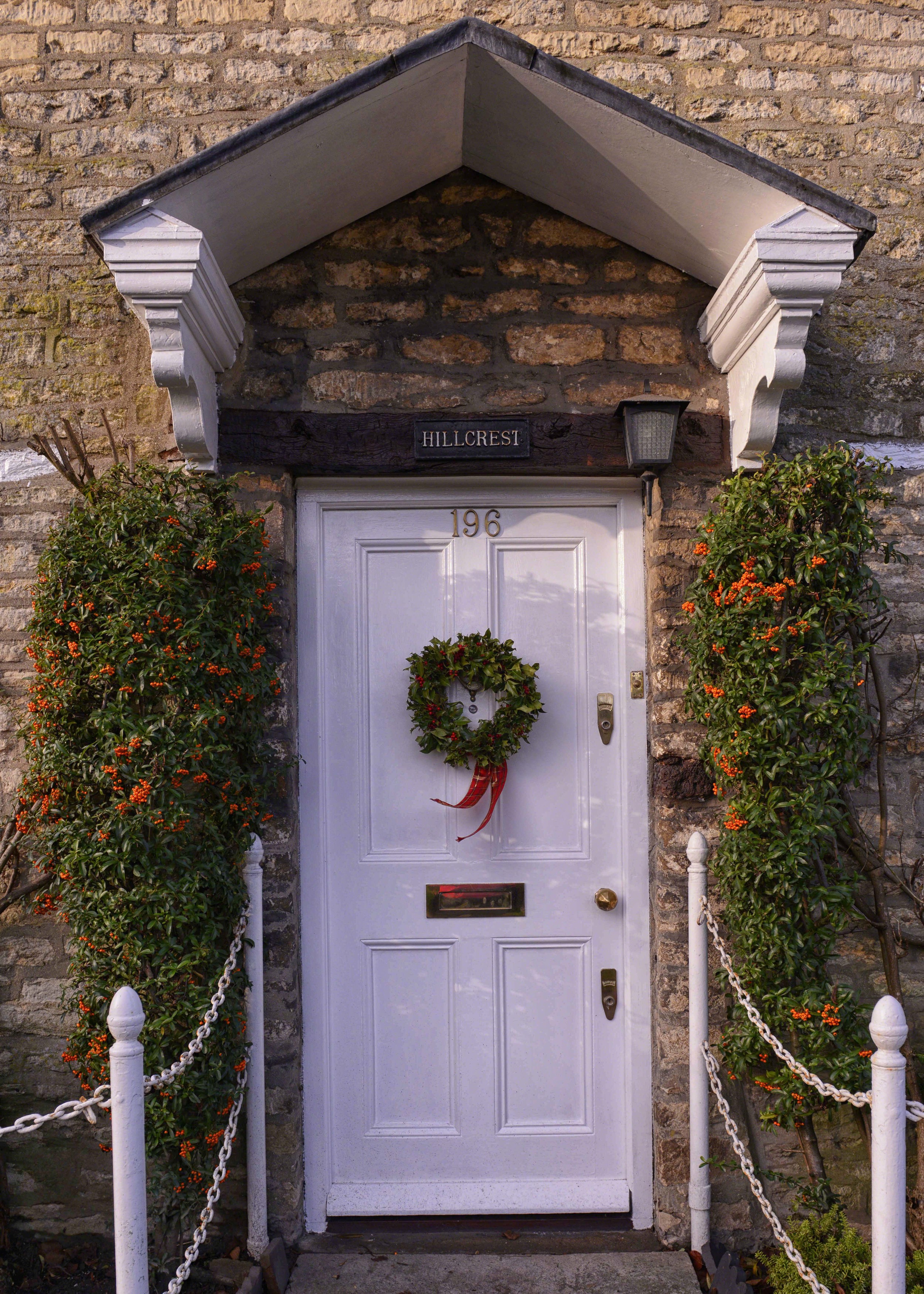
The Cotswolds at Christmas are a treat where every house has its own style of handcrafting that ranges from sweet to whimsical to stately. Even the shrubbery seems to celebrate the season!
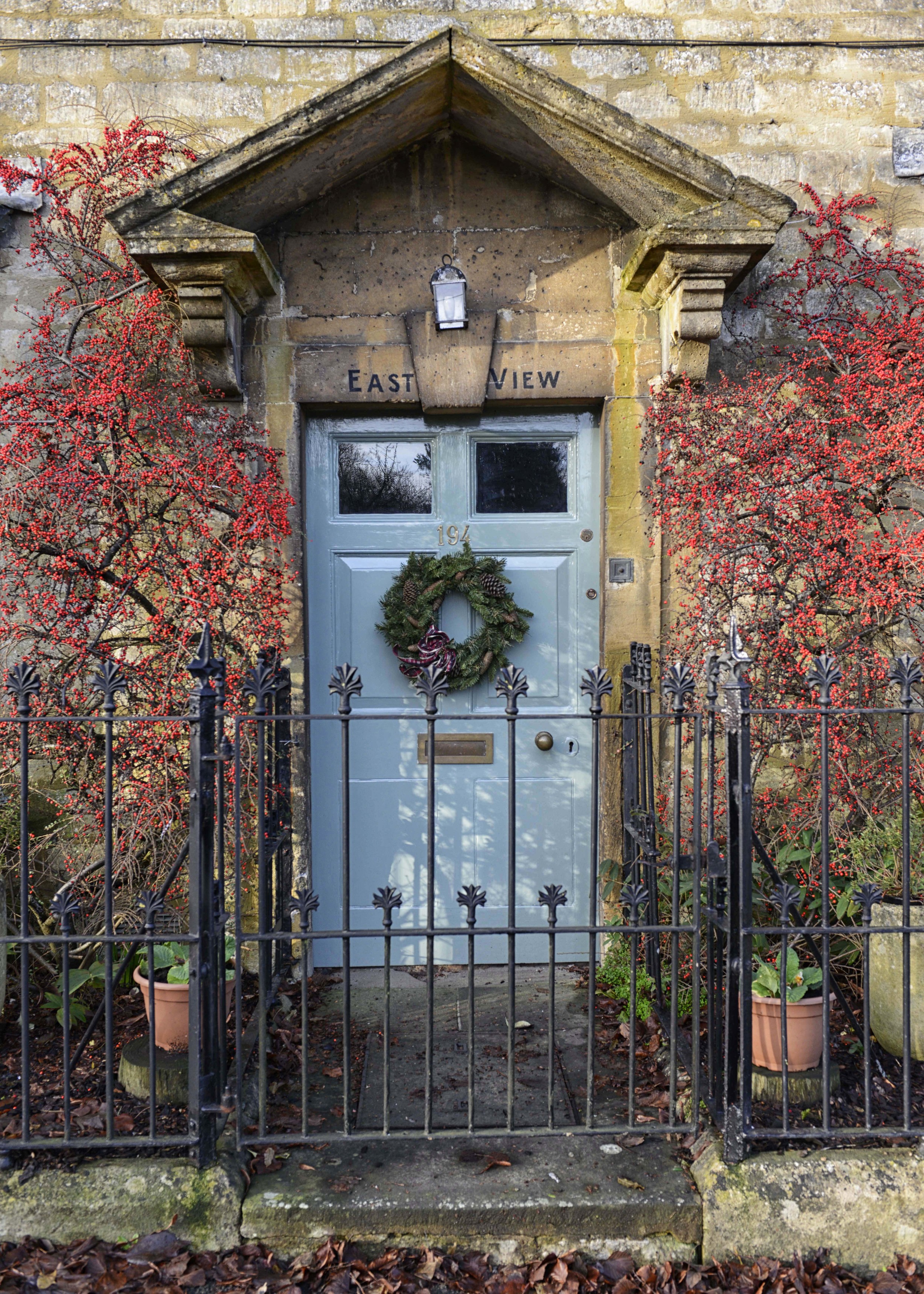
Flanked by flaming berries, this blue door gets into the holiday spirit.
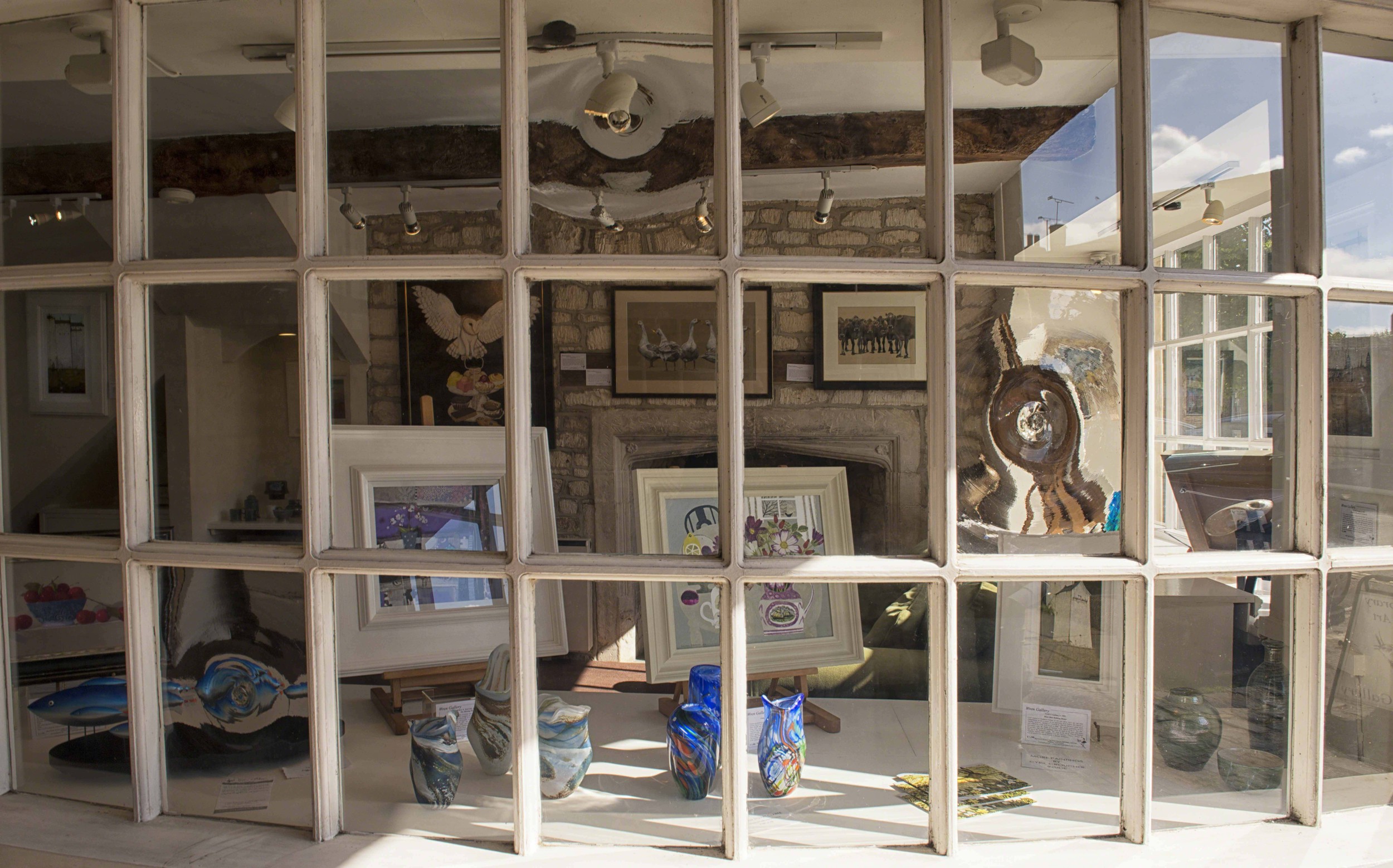
Further down the hill in Burford, this gallery window tempts buyers and passersby equally.
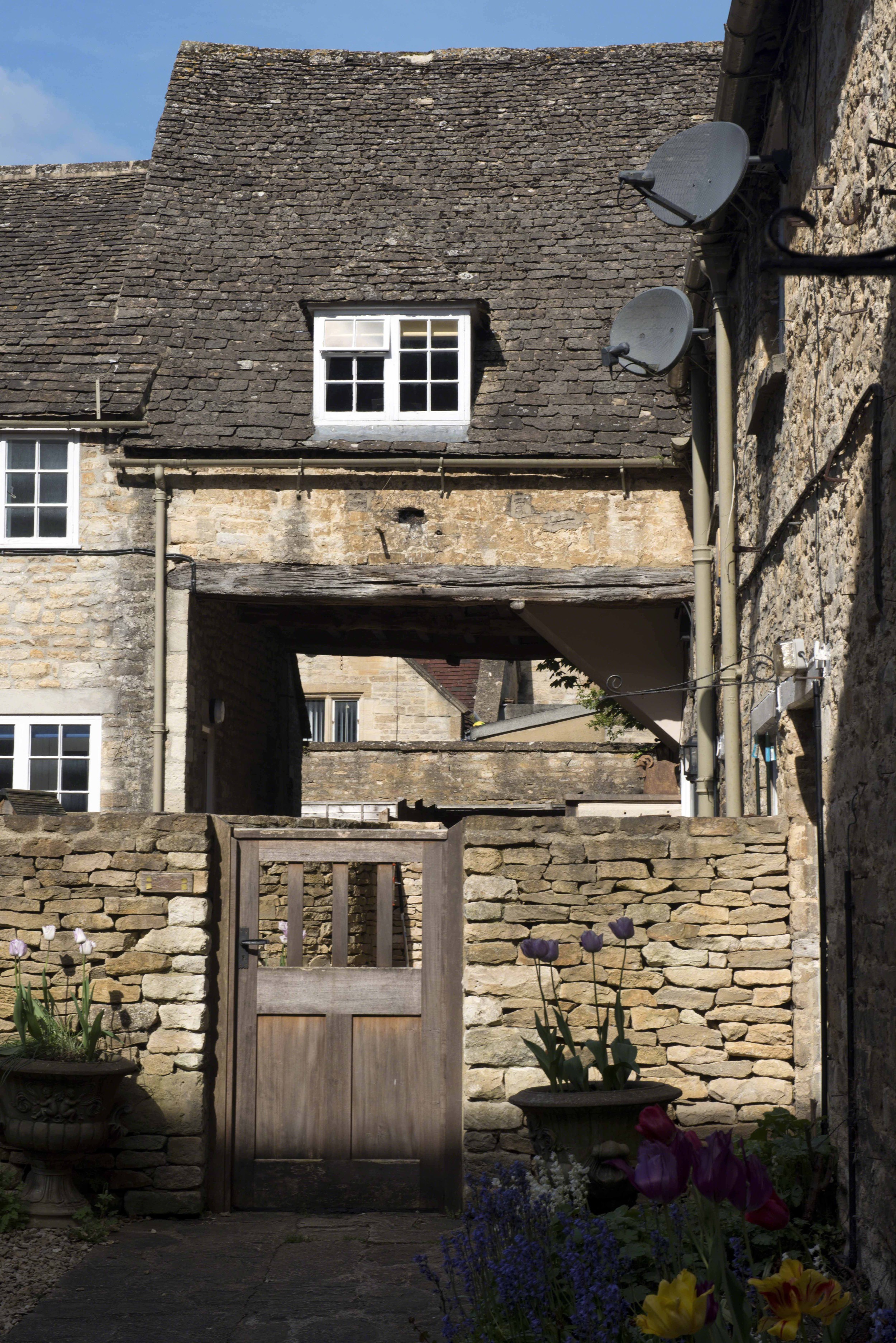
What looks to be an old entrance for coaches is now walled off but still useful, forming an intriguing layered yard.
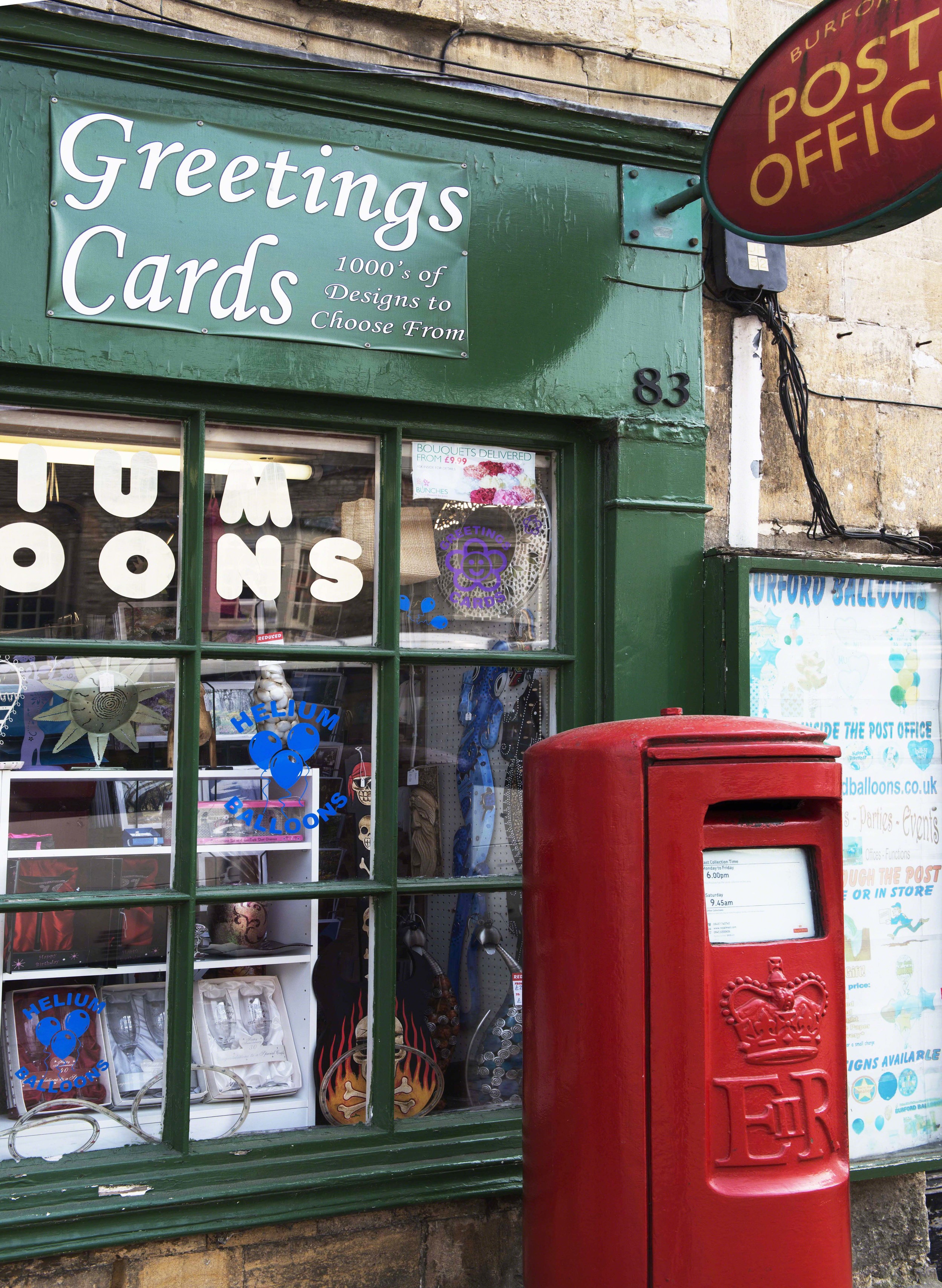
Cotswold post offices fascinate me, as the smaller ones happily cohabitate with stationery, sundries or in this case a balloon shoppe.
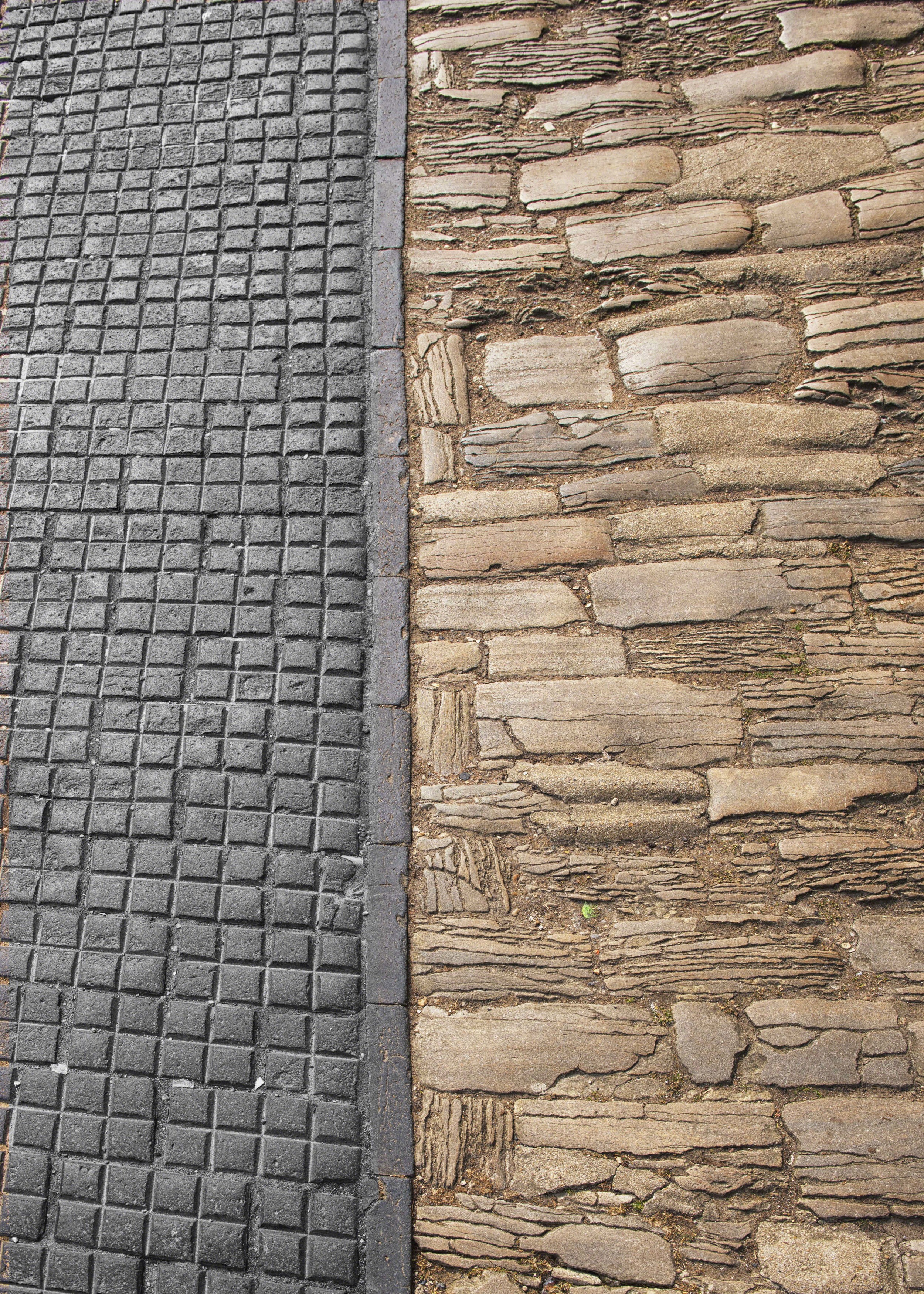
I could not resist taking a photo of the cobblestones on the sidewalk of the High Street in Burford, with completely different styles and materials used side-by-side.

Here the photographer captured herself (me!) as part of this characteristic window scene.

What a darling red door on this wing of a cottage on a side street in Burford. The High Street of each village is so tempting, but the side streets hold their treasures as well.

I was fascinated that this cottage with its small, though adorable planter called itself "Window box Cottage", but it is on Flower Street after all.

This row of eight small homes, called the Warwick Almshouses date to the middle of the 15th Century and are still in use today as "age exclusive" housing.
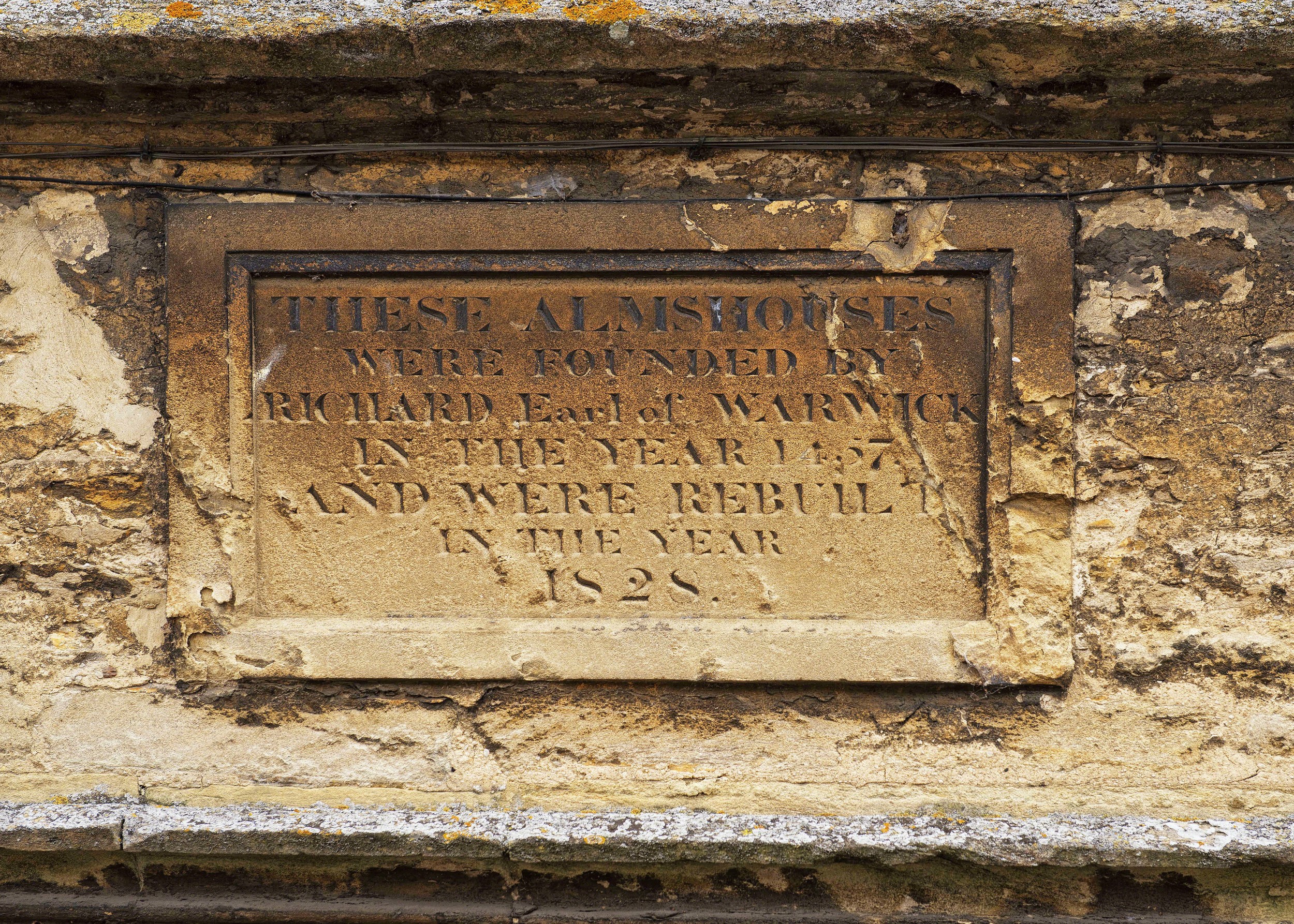
As noted here, the Almshouses were built by Richard, Earl of Warwick in 1457 and rebuilt in 1828.
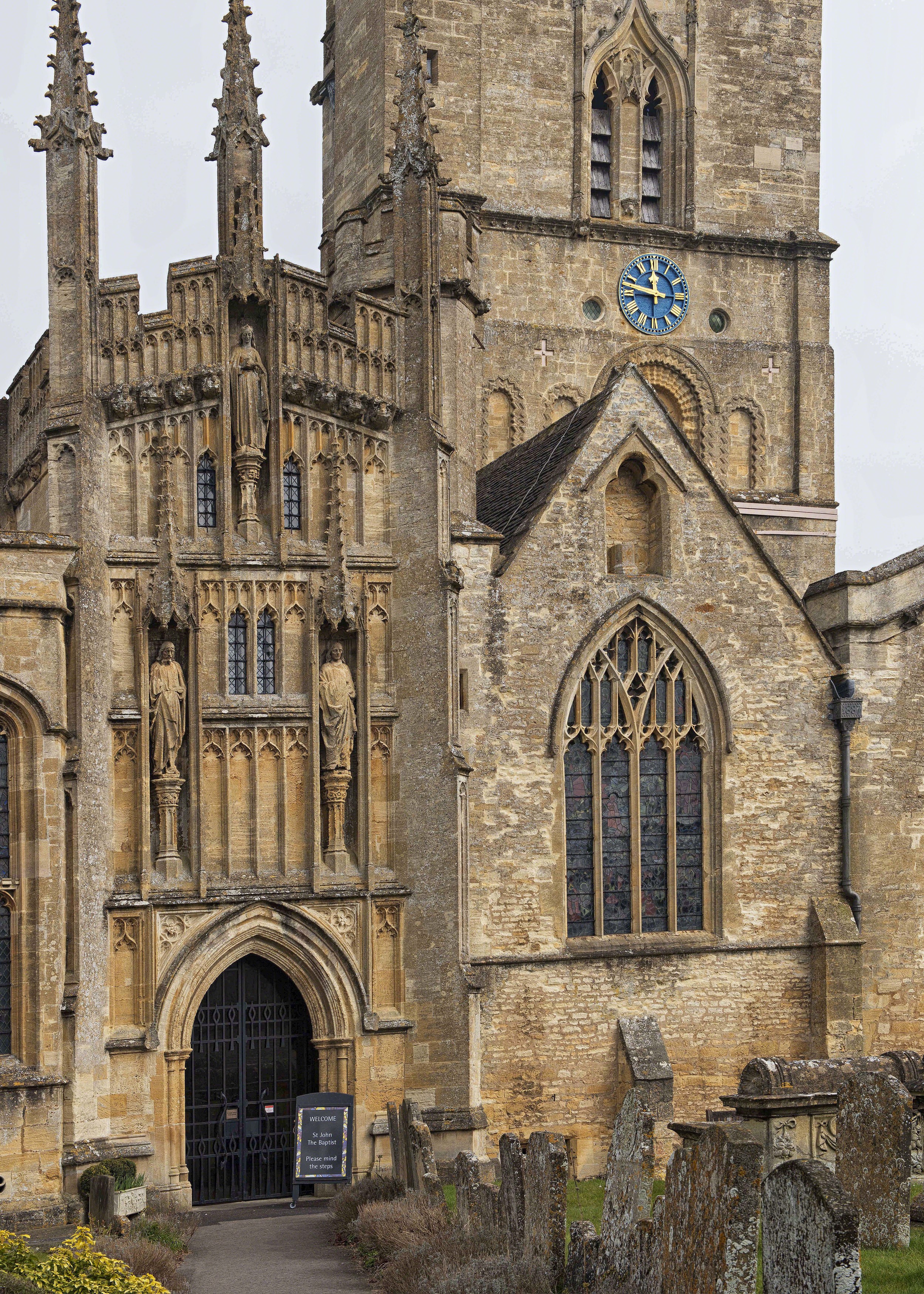
The Church of St. John the Baptist (Anglican) on the north end of Burford dates to 1175 when it was built on the site of an earlier Saxon church. It has been added to over the years.
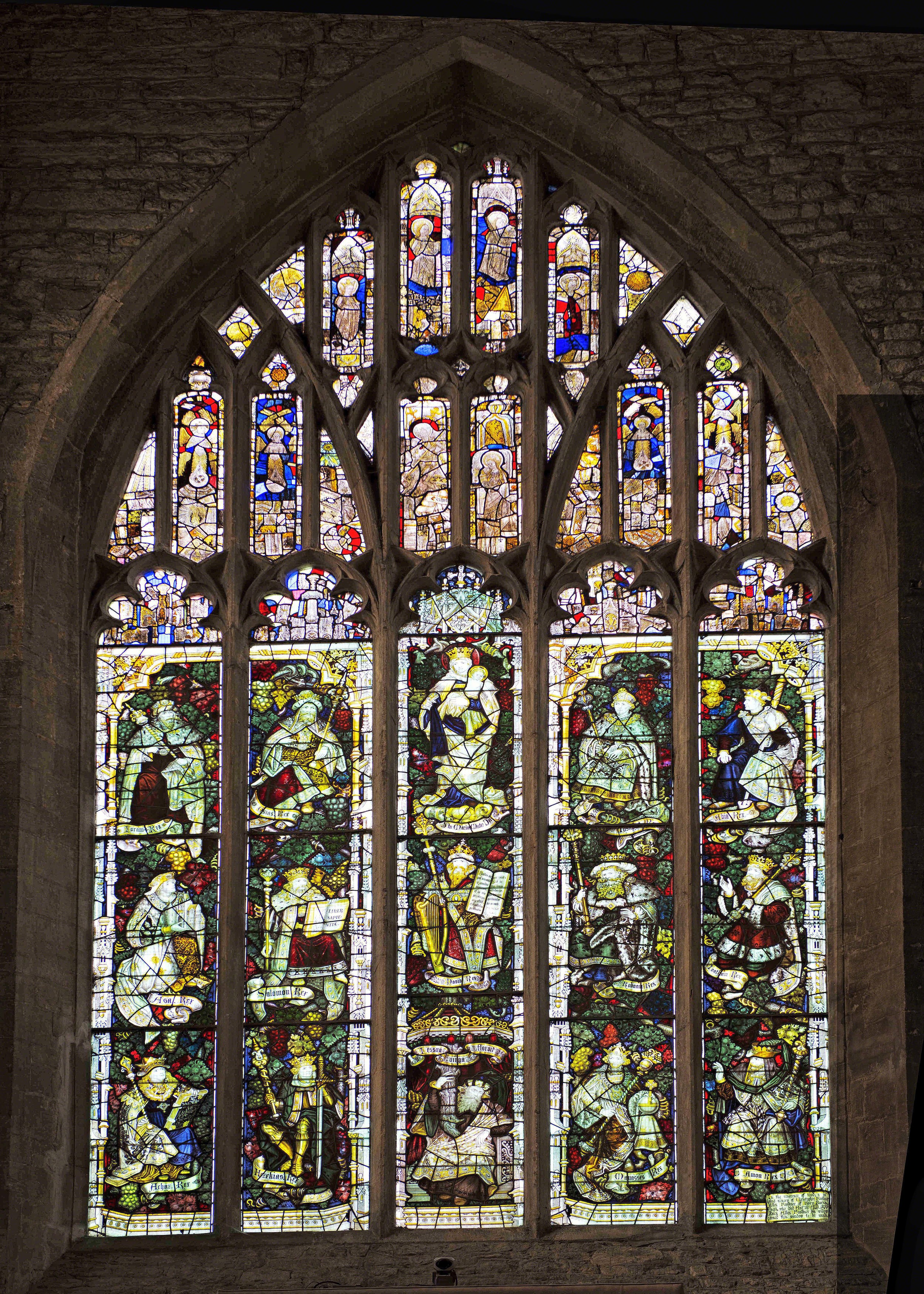
This stained glass window in the Burford church depicts scenes from the life of St. John the Baptist.
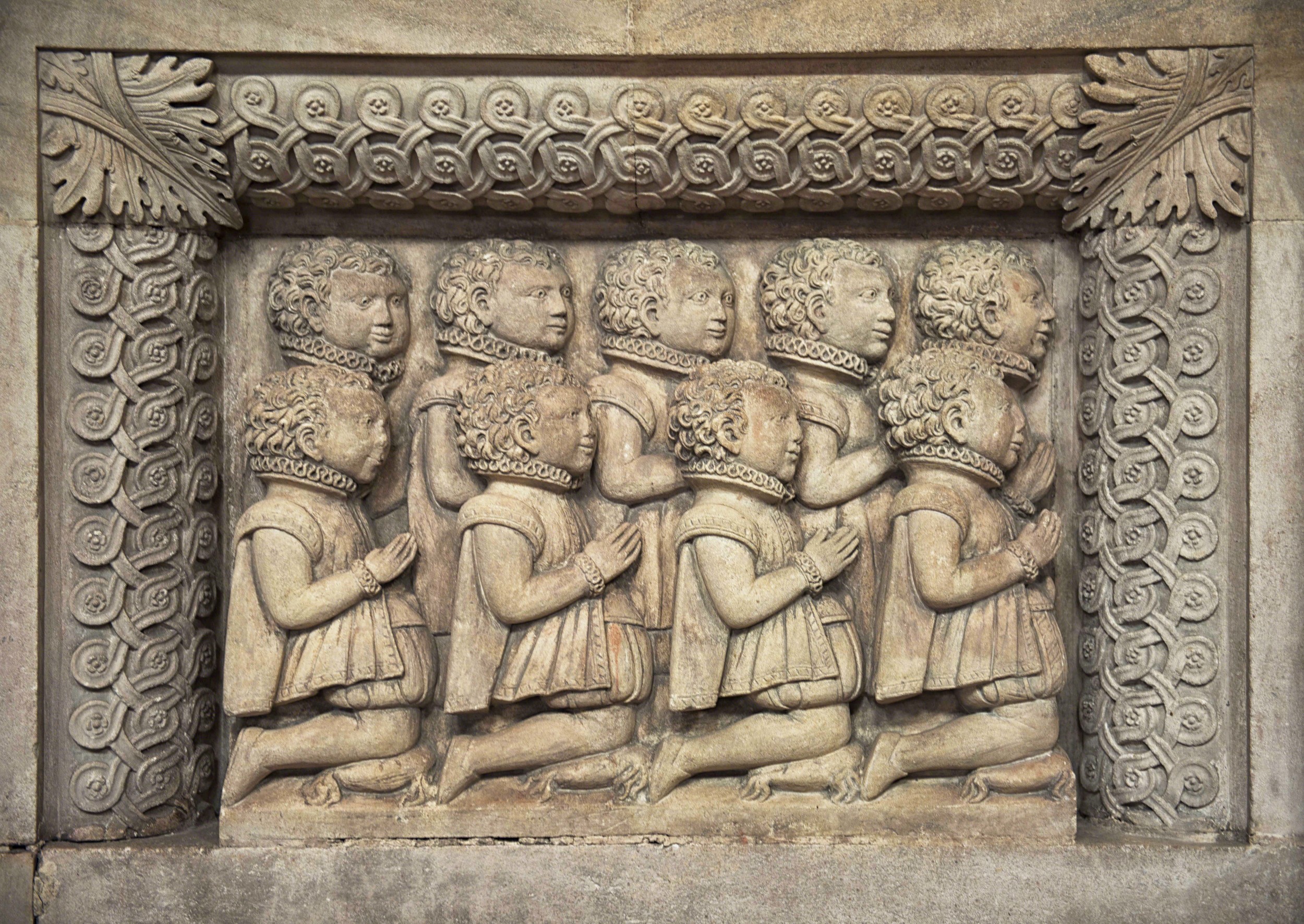
Male Children memorialized in the Harmon Memorial are, in my opinion, a bit odd looking.

Colorful, pious effigies of Sir Lawrence & Elizabeth Tanfield. He was Lord Chief Baron of the Court of Exchequer from 1607.
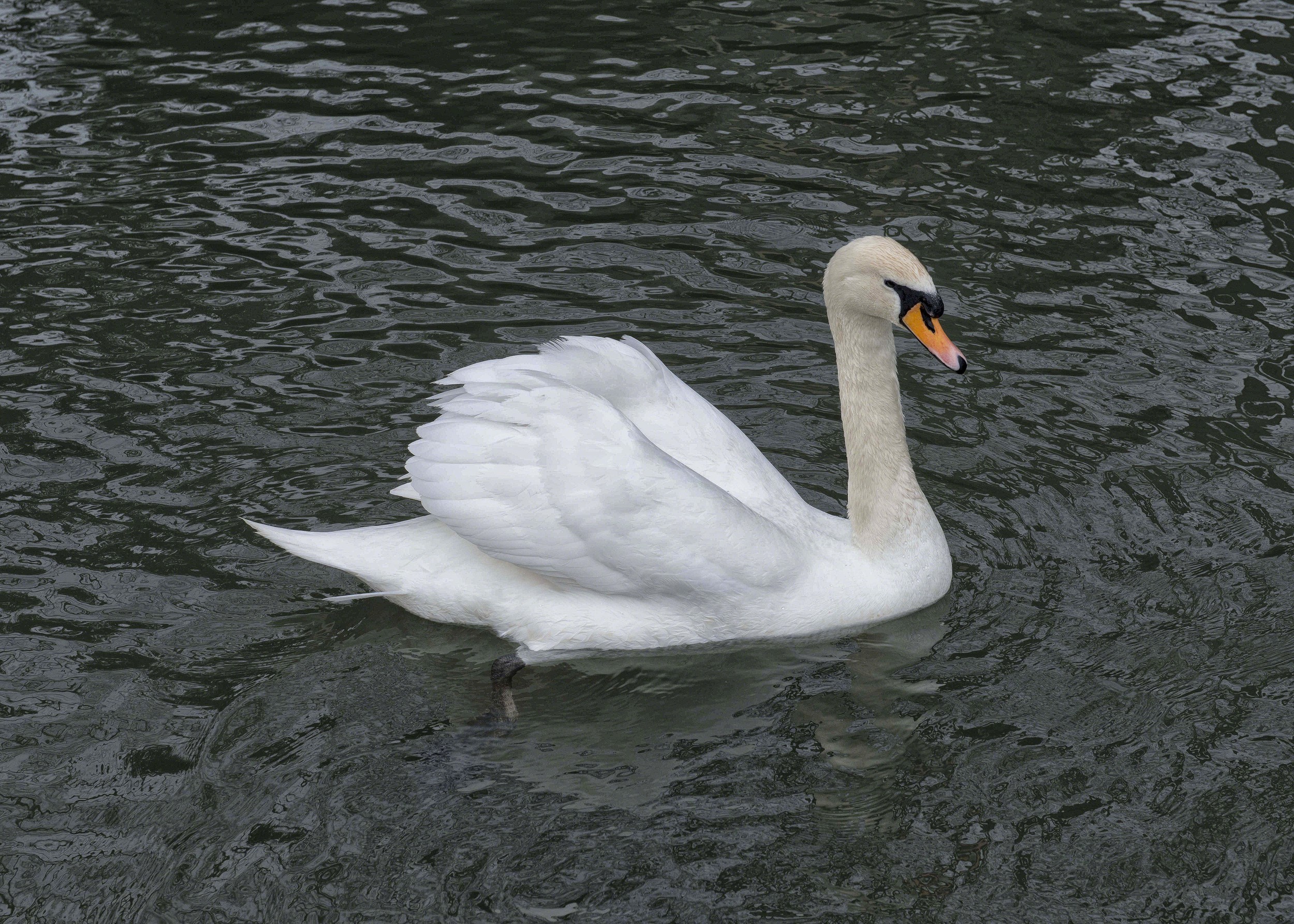
Outside in the fresh air, swans swim in their elegant way on the River Windrush.
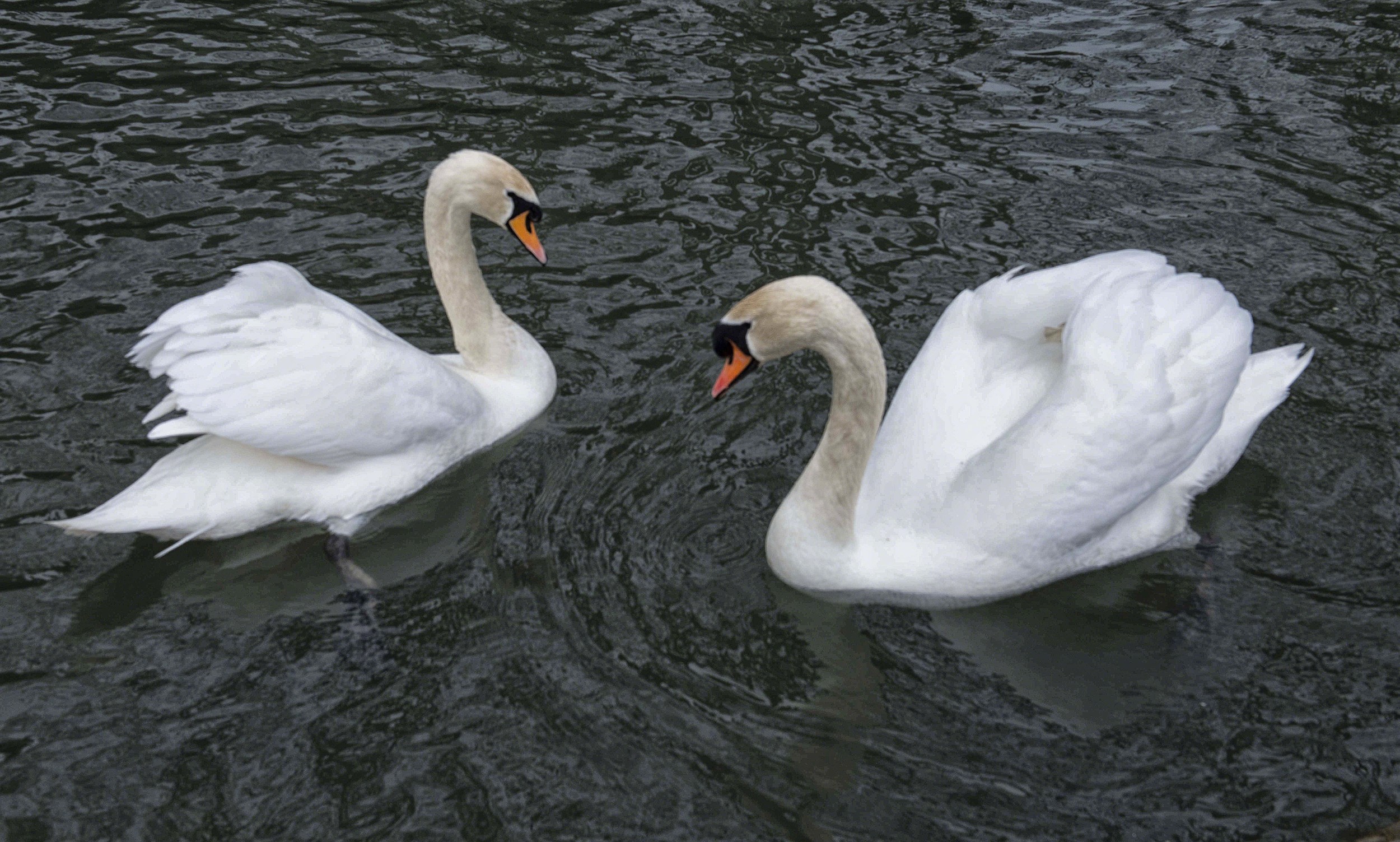
Two swans vie for attention, I like to think for the benefit of the photographer.

The countryside between Burford and Tayton is delightfully rural.
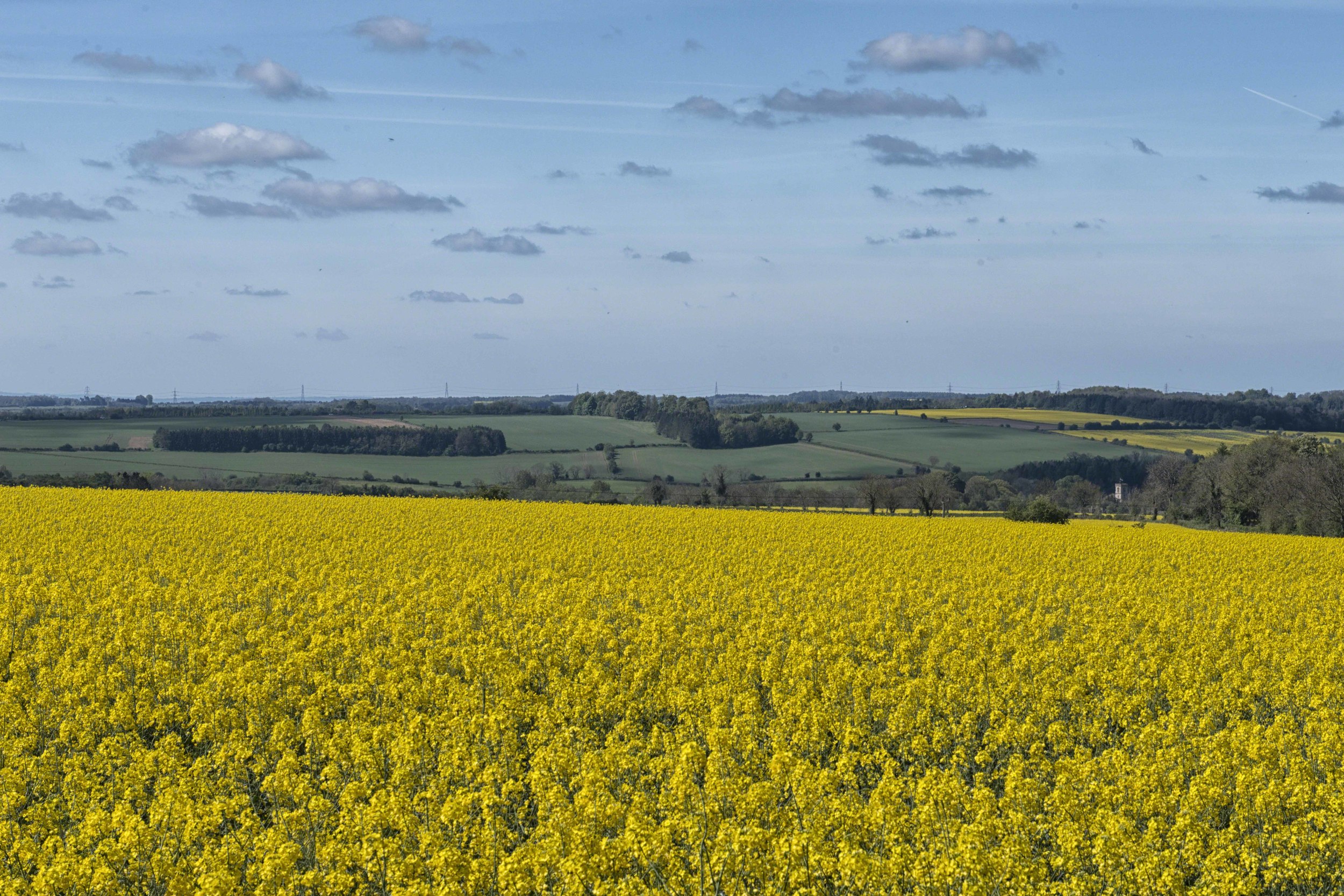
What could be more colorful than the brilliantly yellow canola, backed by the greens of fields and the shades of blue sky near Burford and Tayton?

Bourton-on-the-Water sits prettily on both sides of the River Windrush. With its picturesque streets and low, arched stone bridges, it is called the Venice of the Cotswolds.
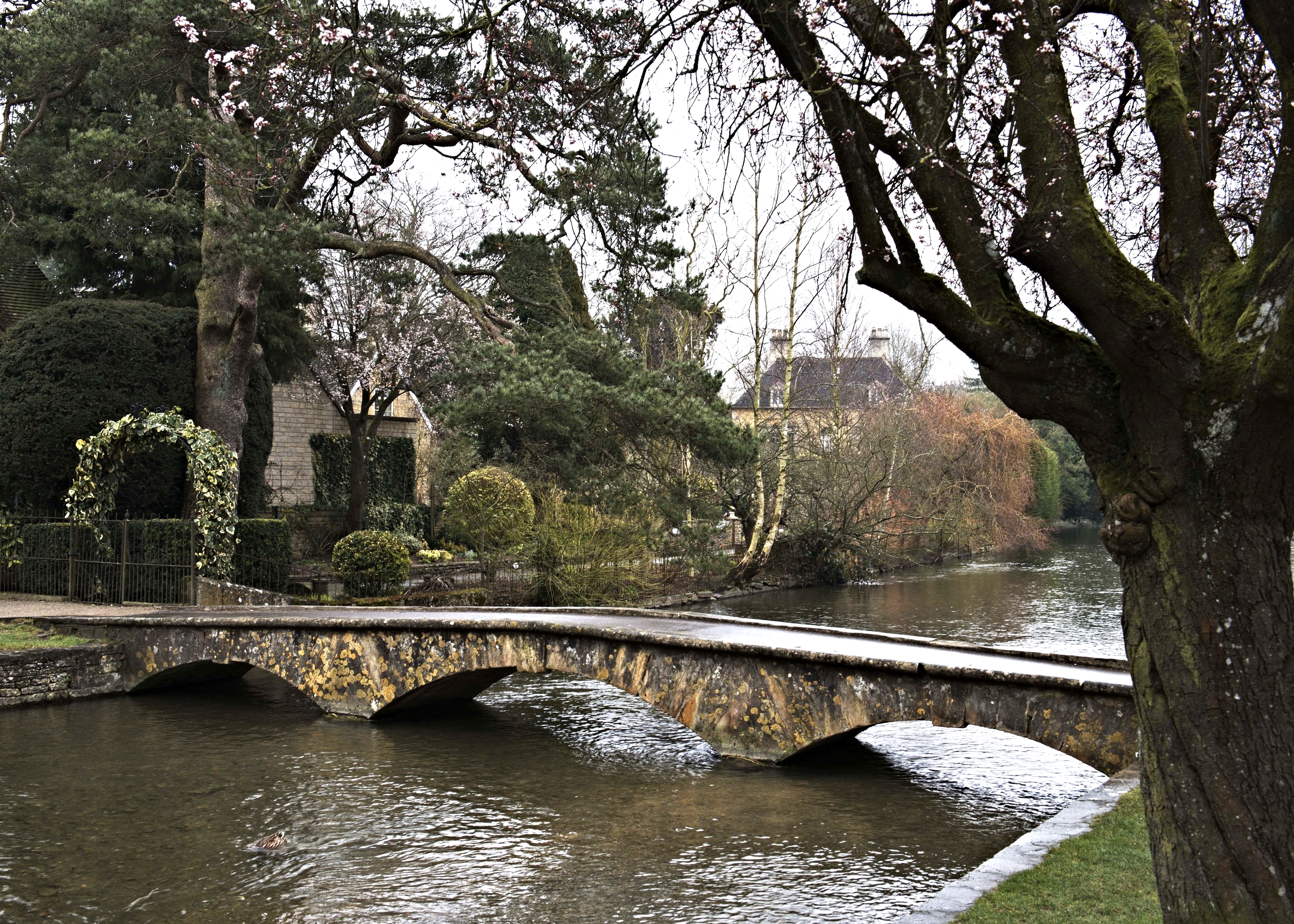
Looking across this small bridge over the River WIndrush, I can still smell the fresh clean air characteristic of the Cotswolds.
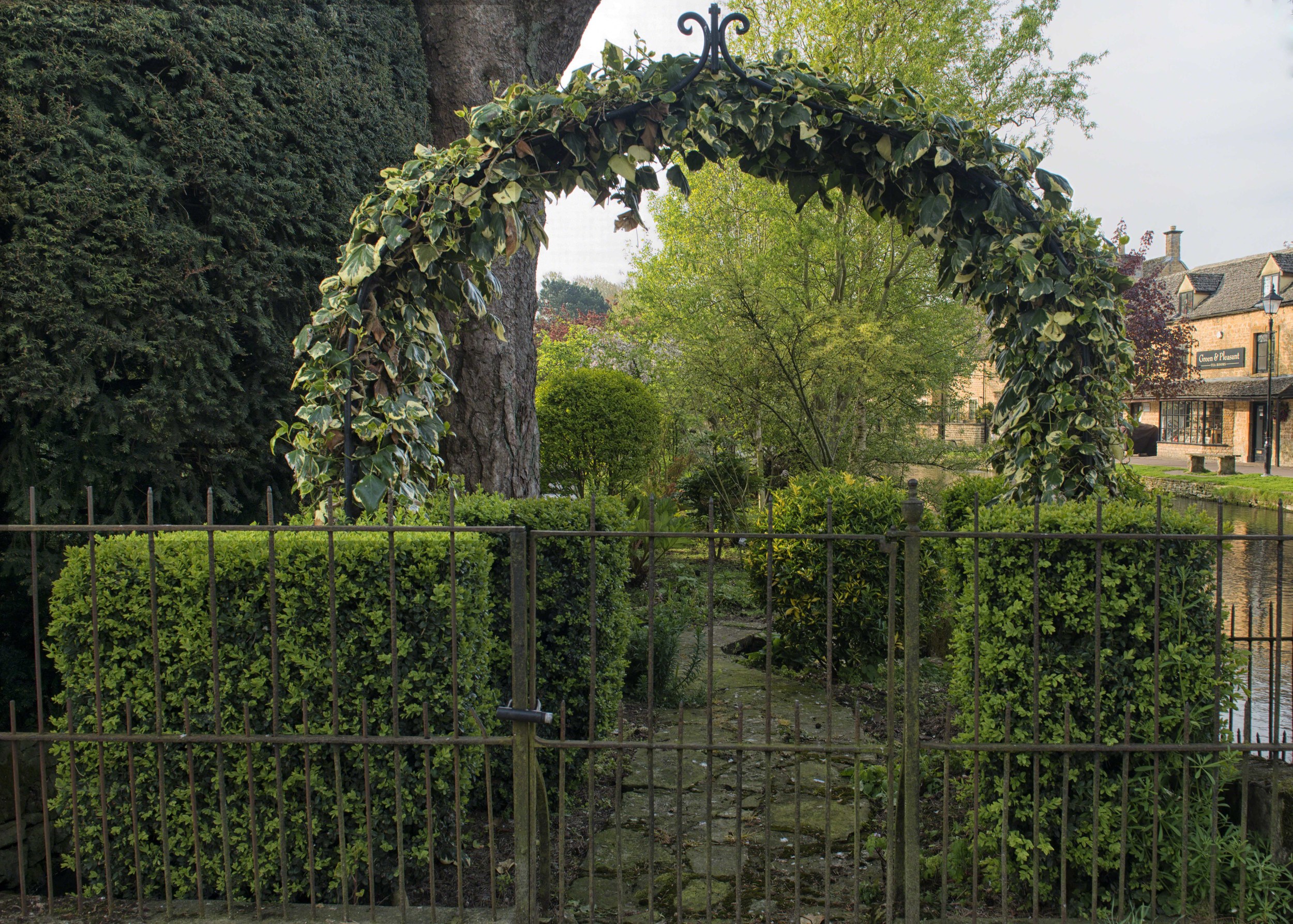
A closer look at the garden ivy topiary archway lures visitors into stopping and feeling its enchantment.

Gentle, early spring view of the River Windrush as it flows through Bourton-on-the-Water.
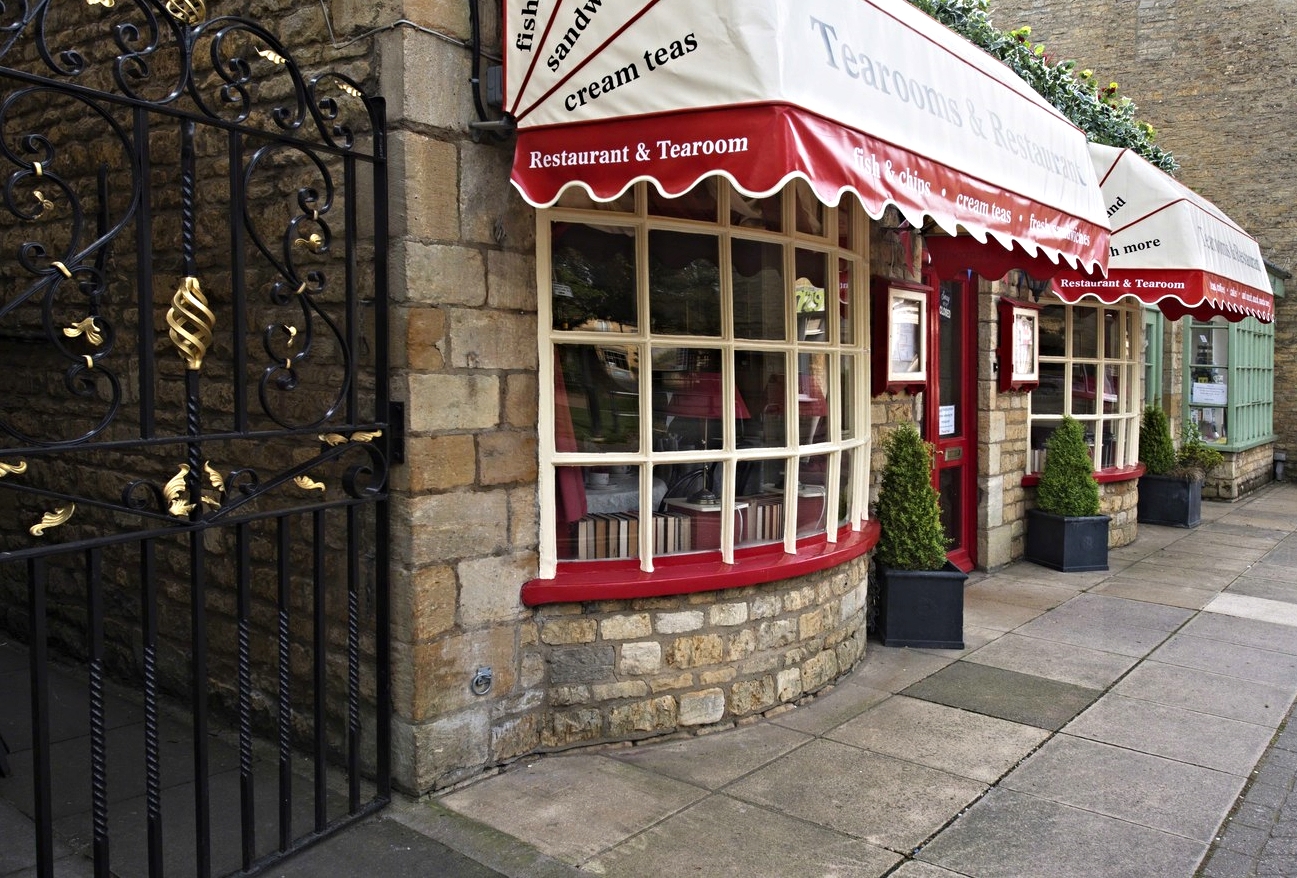
A Tearoom can be as cute as a candy cane!

A Sweet Corner with an Ice Cream Shop and a Nook of Cute Things Shop.

One of the little side streets in Bourton-on-the-Water, leads to a Sweet Shop.
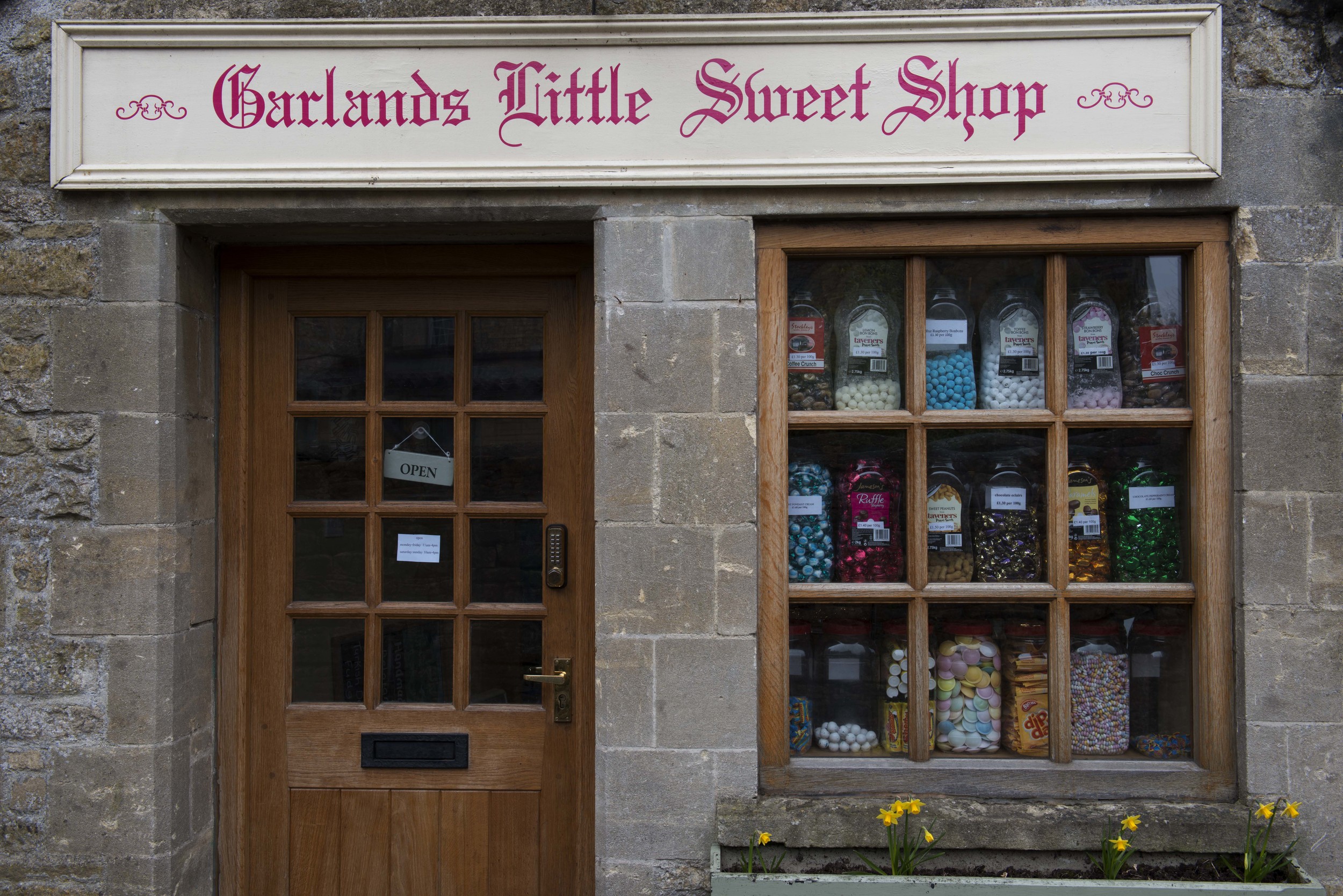
The Village Sweet Shop must be alive with children on a summer day.

River and other reflections in the Florist's window.

Reminding us to watch out for a low step is reminiscent of "Mind the Gap" on the London Underground.
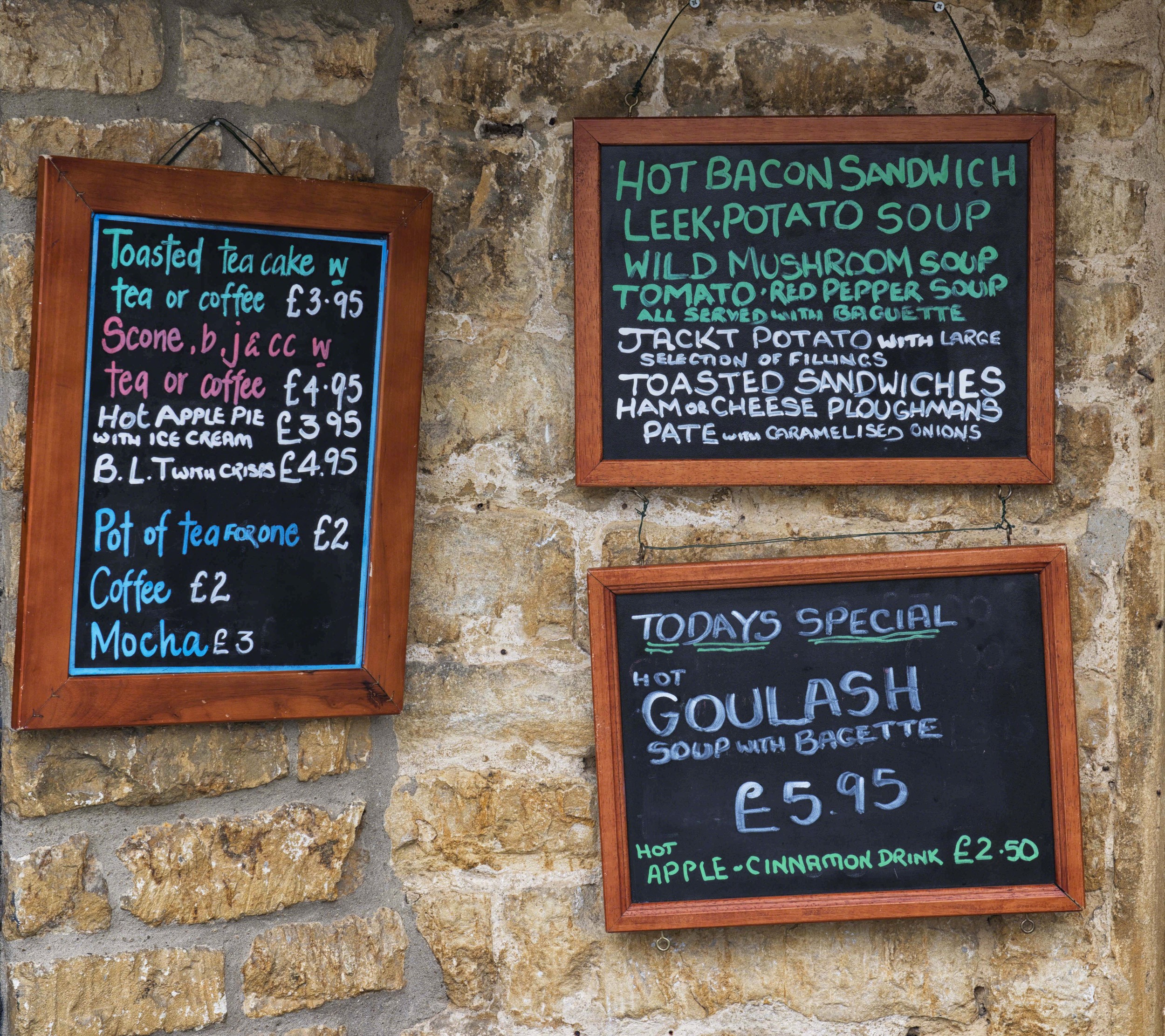
I adore signs in villages. Just looking at these make my tummy rumble for English comfort food!
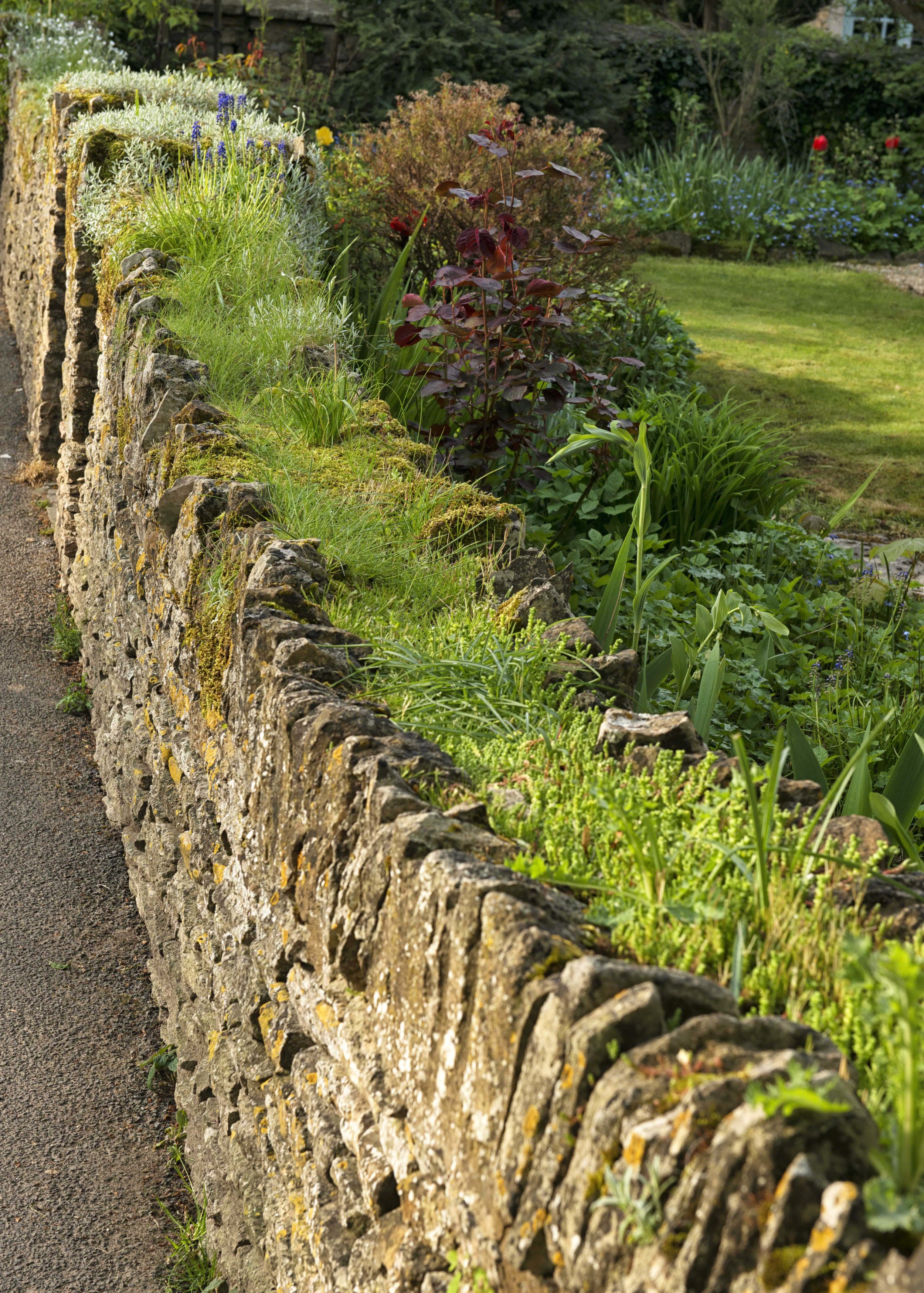
Gardens are prolific in the Cotswolds, grown even on top of stone walls.
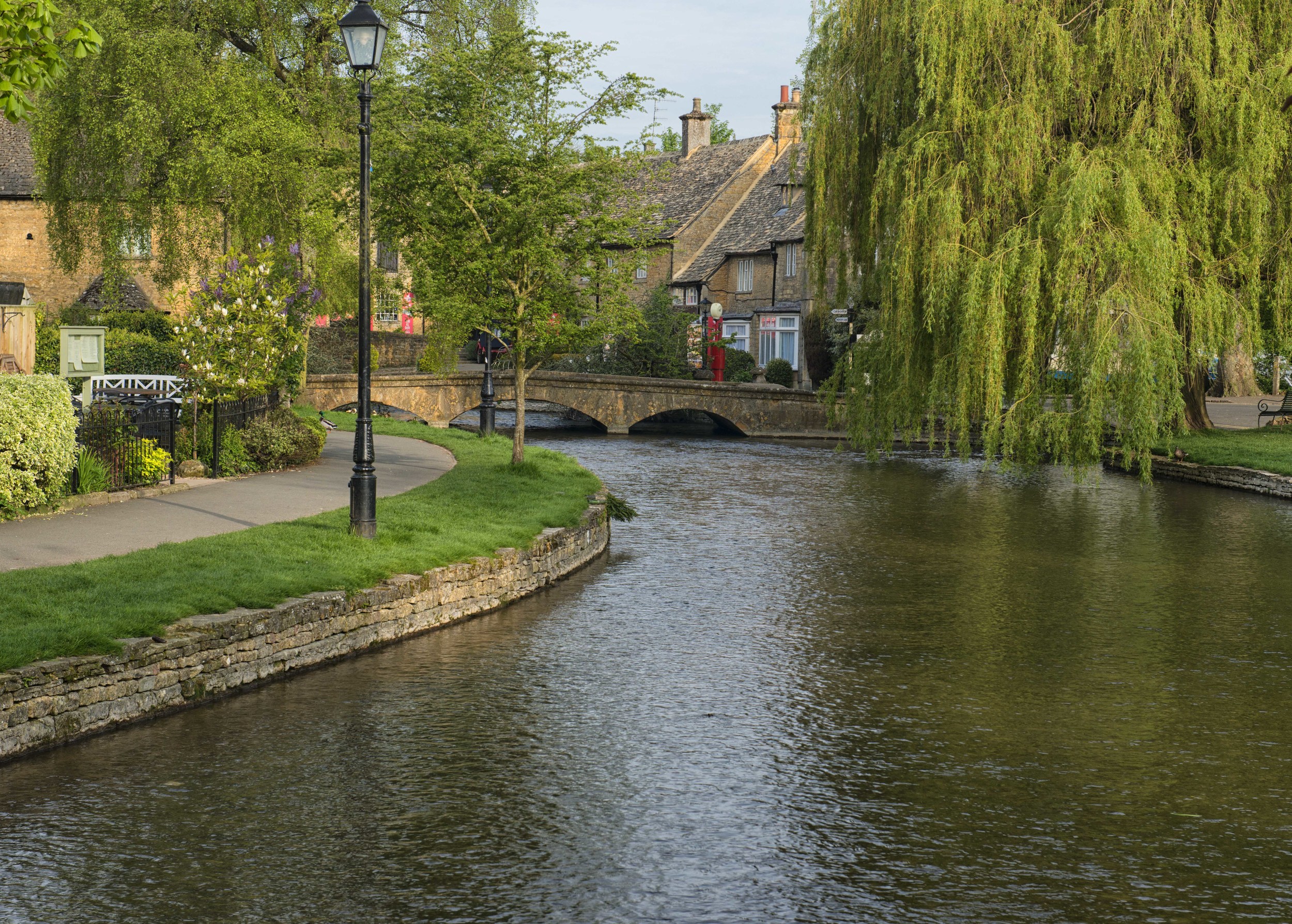
Flourishing willow with its feet in the water, as willows love to be.

Watery reflections in the River Windrush in soft morning light.

Leaving Bourton-on-the-Water and heading back to the hotel, I encountered these mossy signposts and this lovely Cotswold honey-colored wall.

The artistry is interesting with the grist mill style wheels embedded at regular intervals. Clearly the drywaller who laid this wall was a master craftsman.

Pretty Broadway has honey-colored stone buildings only a wide street that typify the Cotswolds.
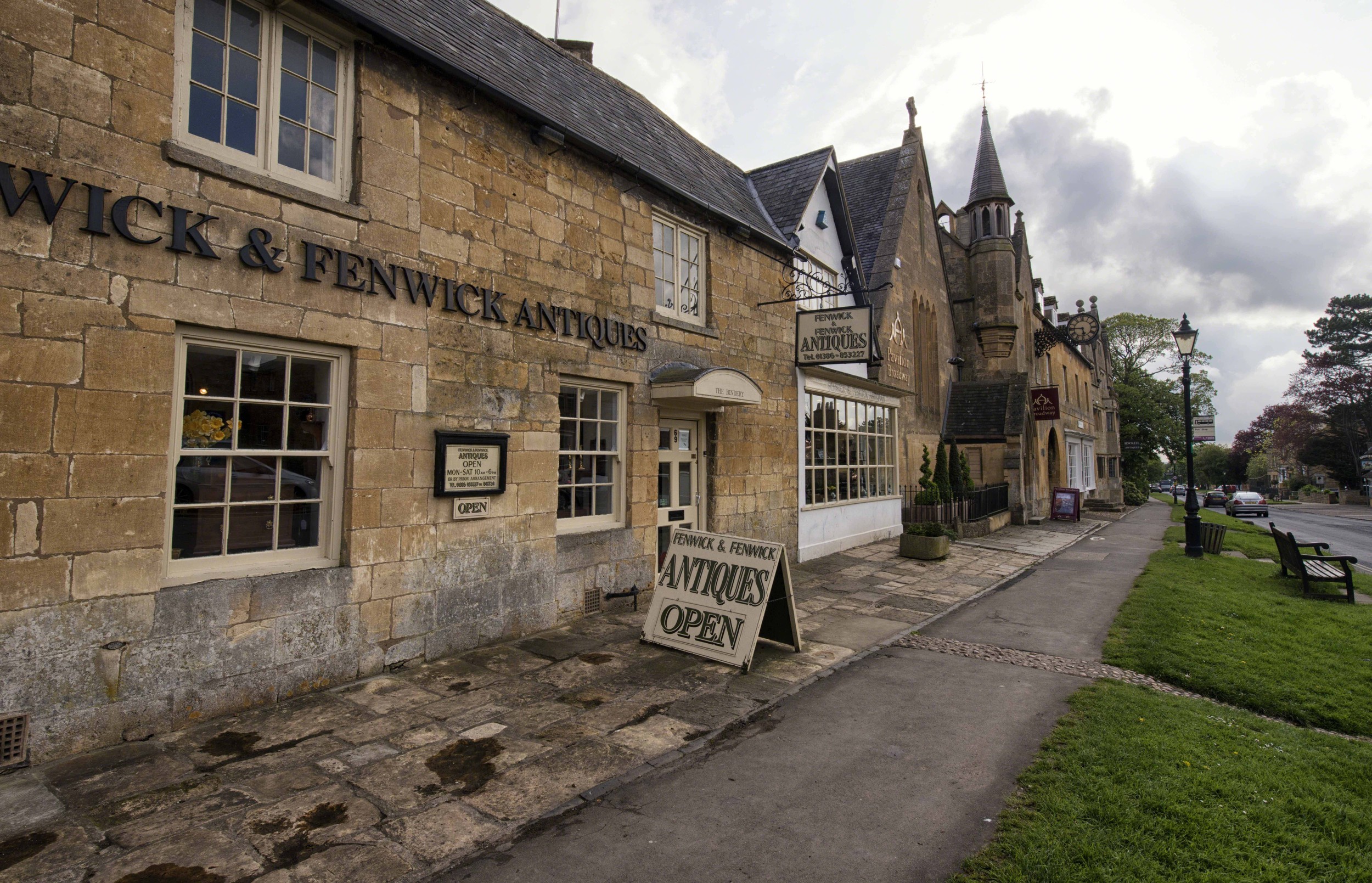
Looking down the High Street in Broadway near the end of the day.
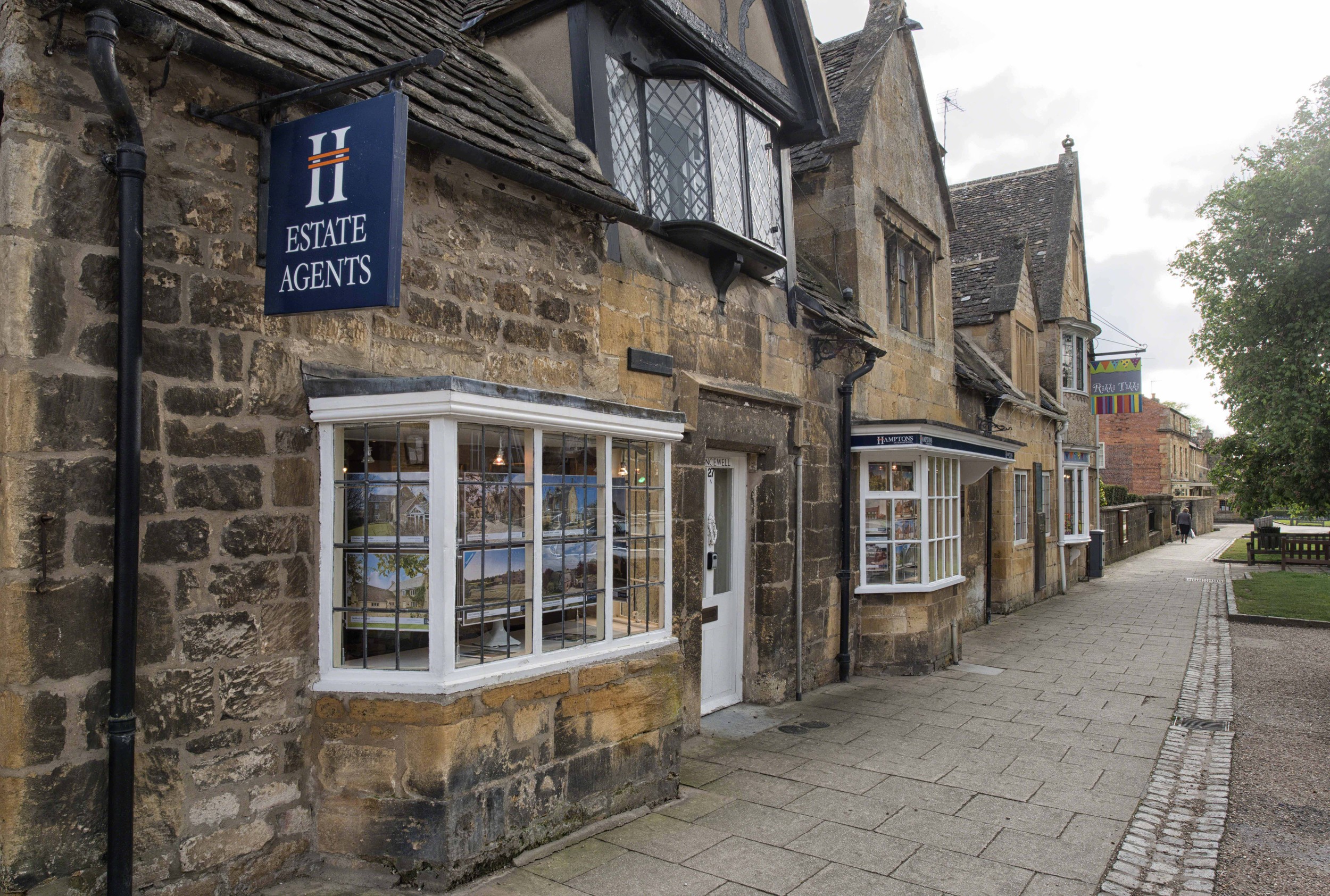
Another view of the High Street with its cobblestone sidewalk.
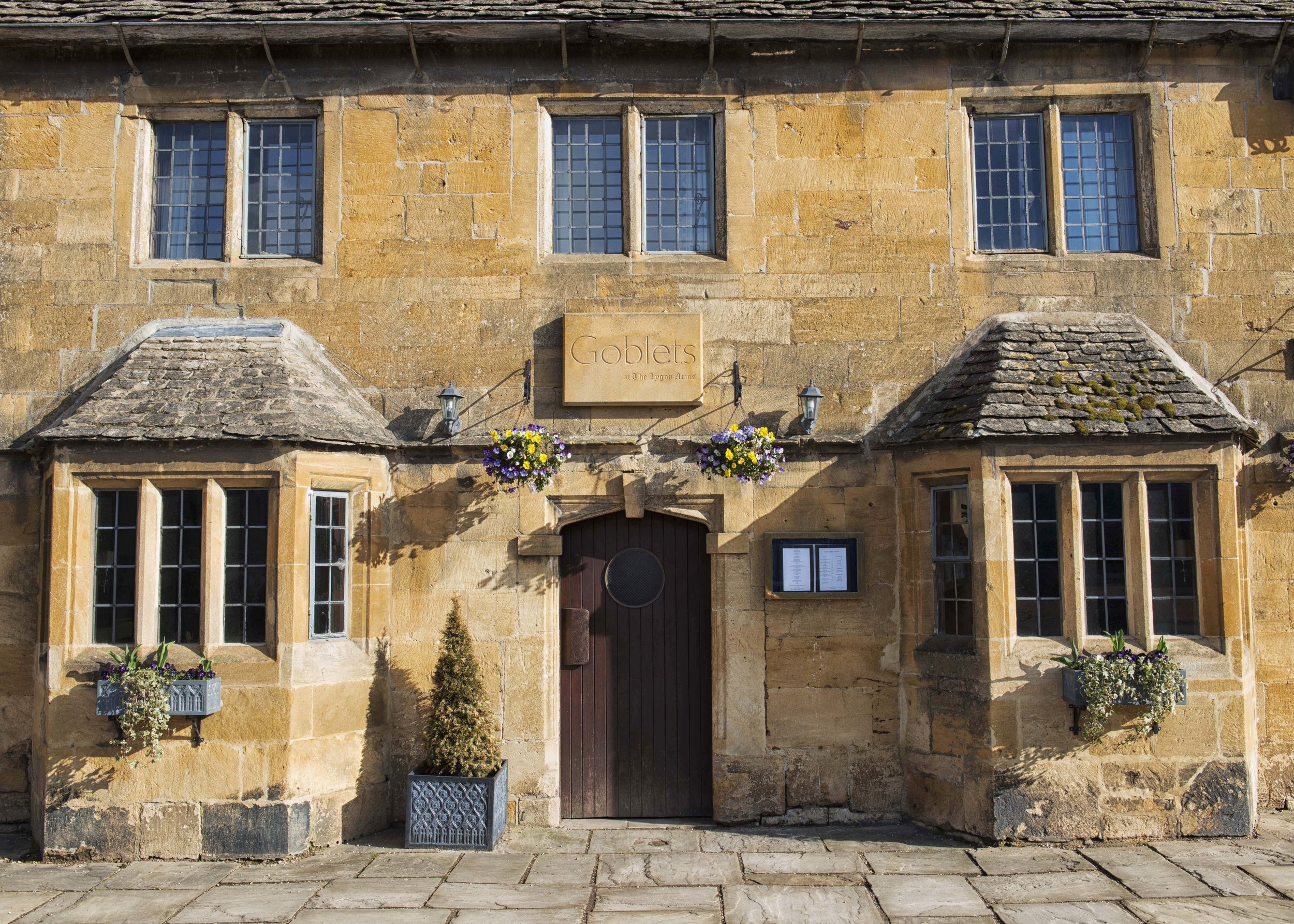
The honey-colored stone glows in the late afternoon light at this Broadway restaurant called "Goblets" at the Lygon Arms.
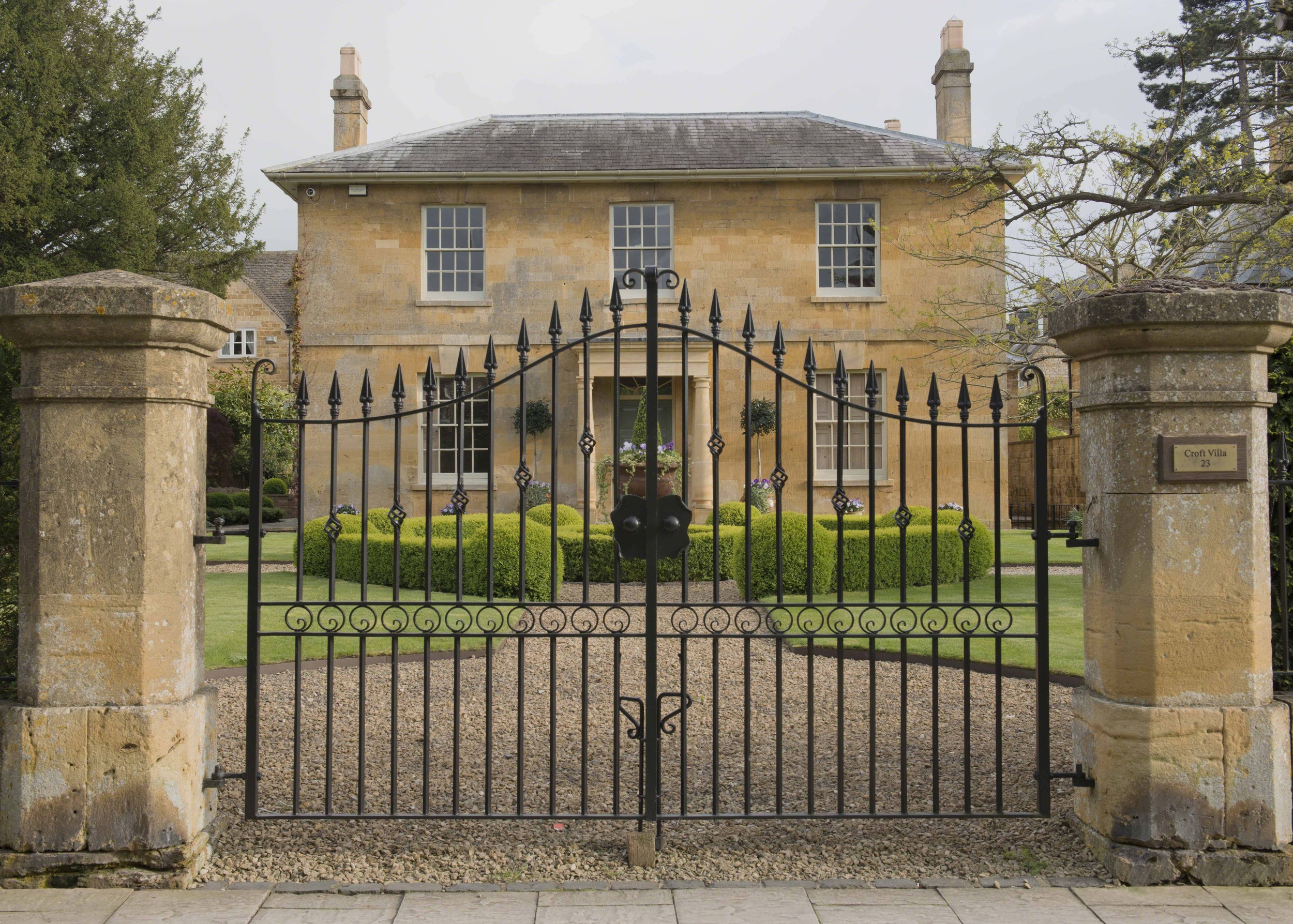
A handsome Broadway house with its alluring walled garden.
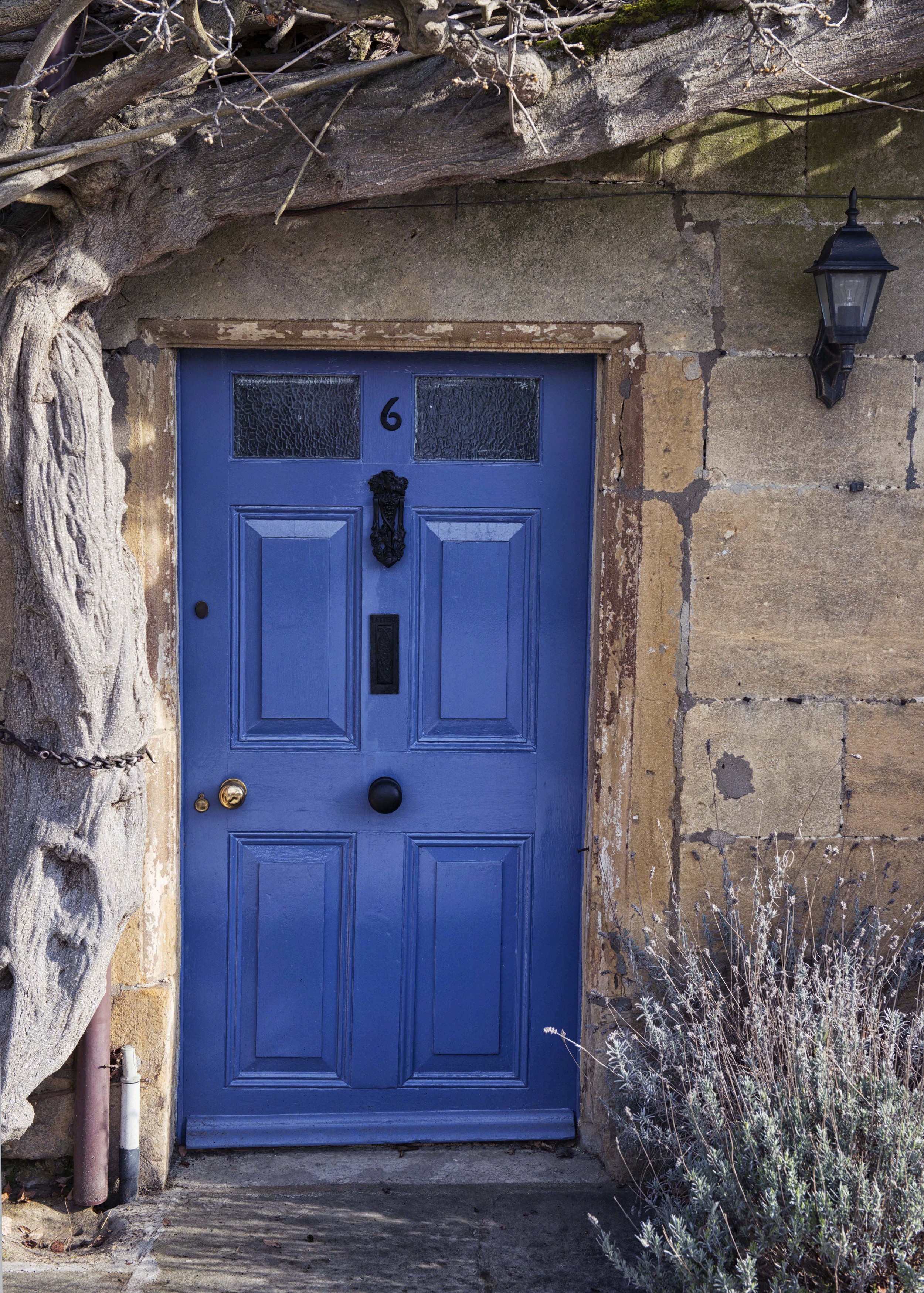
Pretty blue doored house framed by a giant, old wisteria.
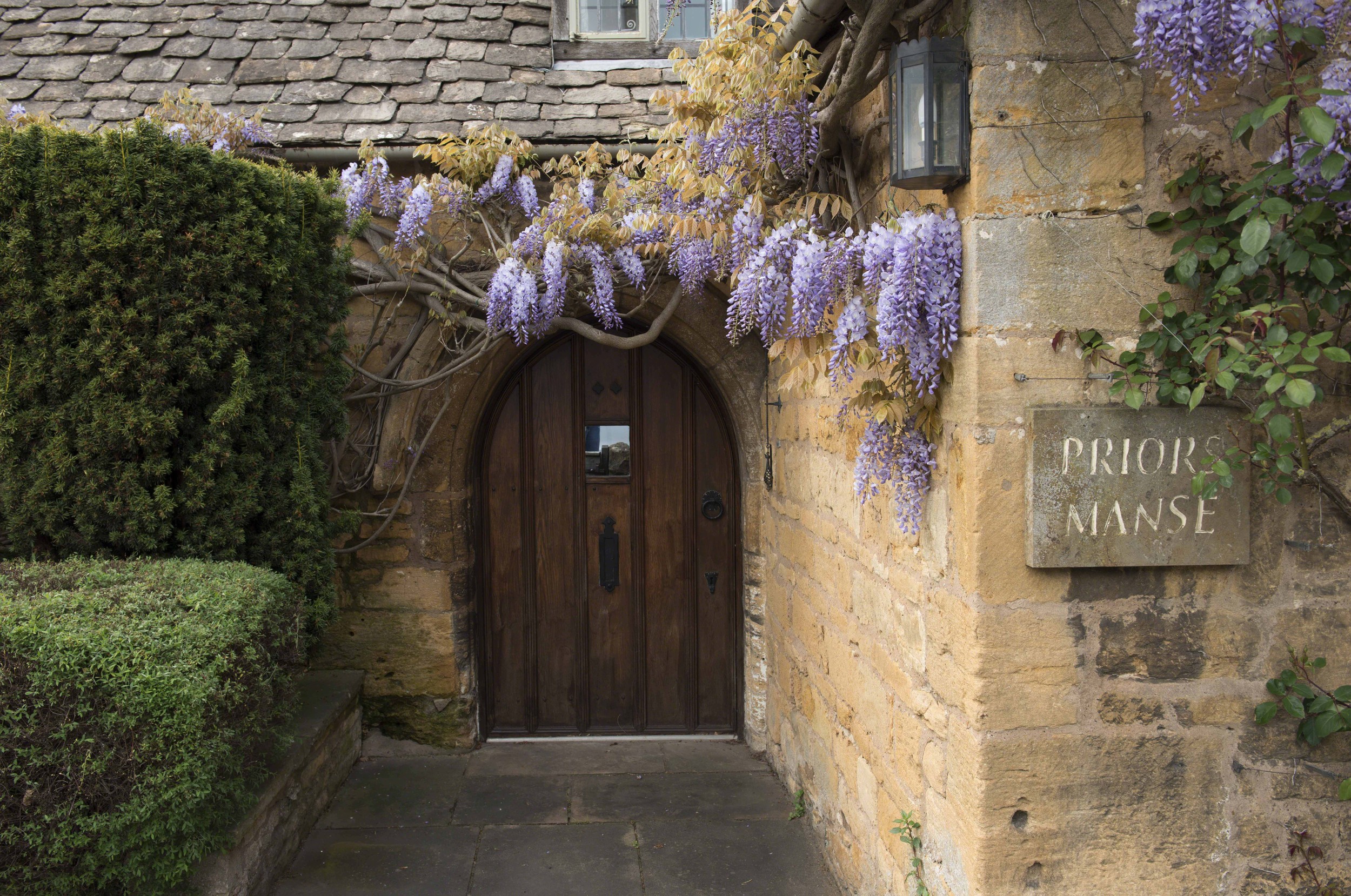
A wisteria festoons a doorway at Prior Manse, Broadway.
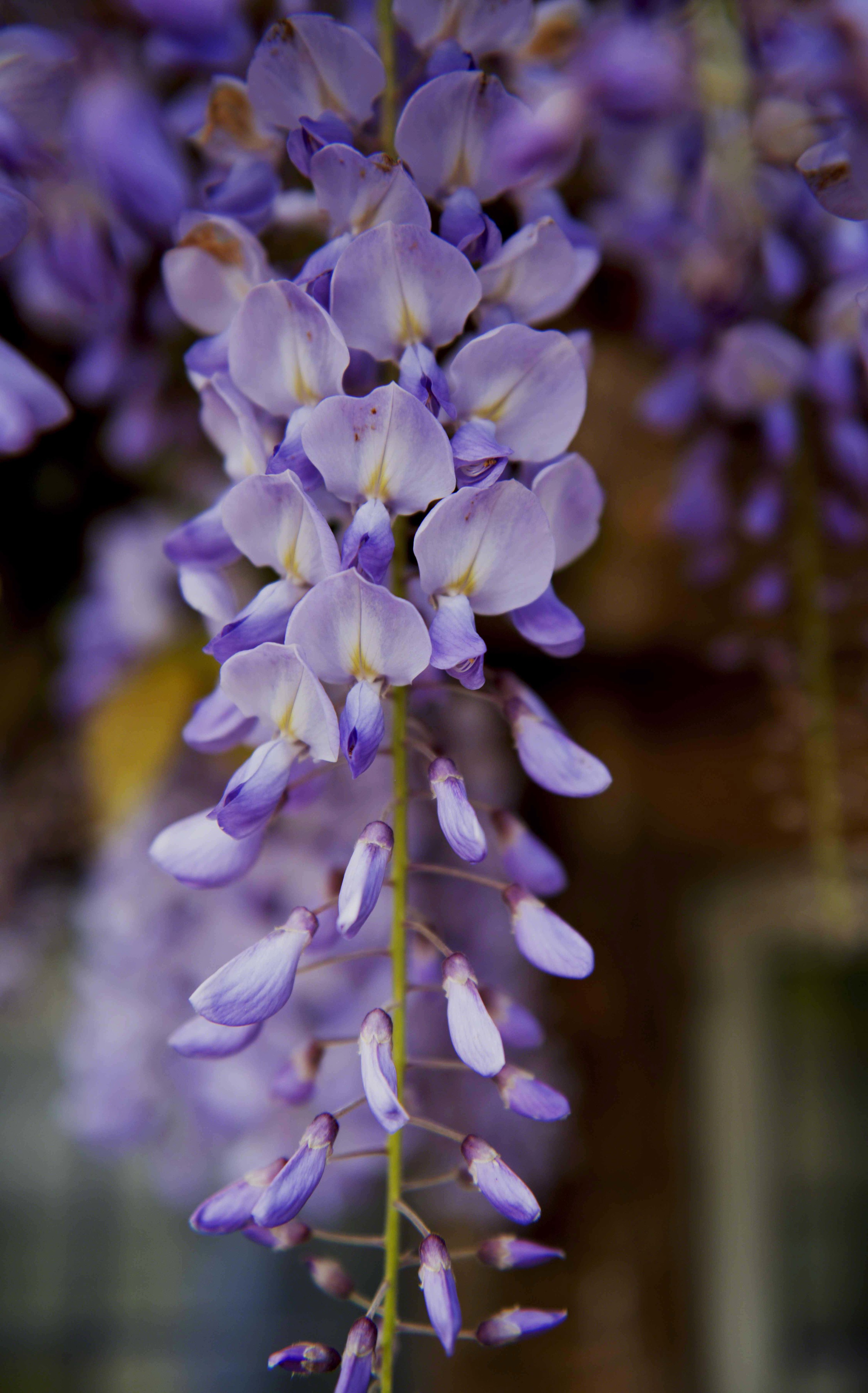
Spring wisteria, lush and full
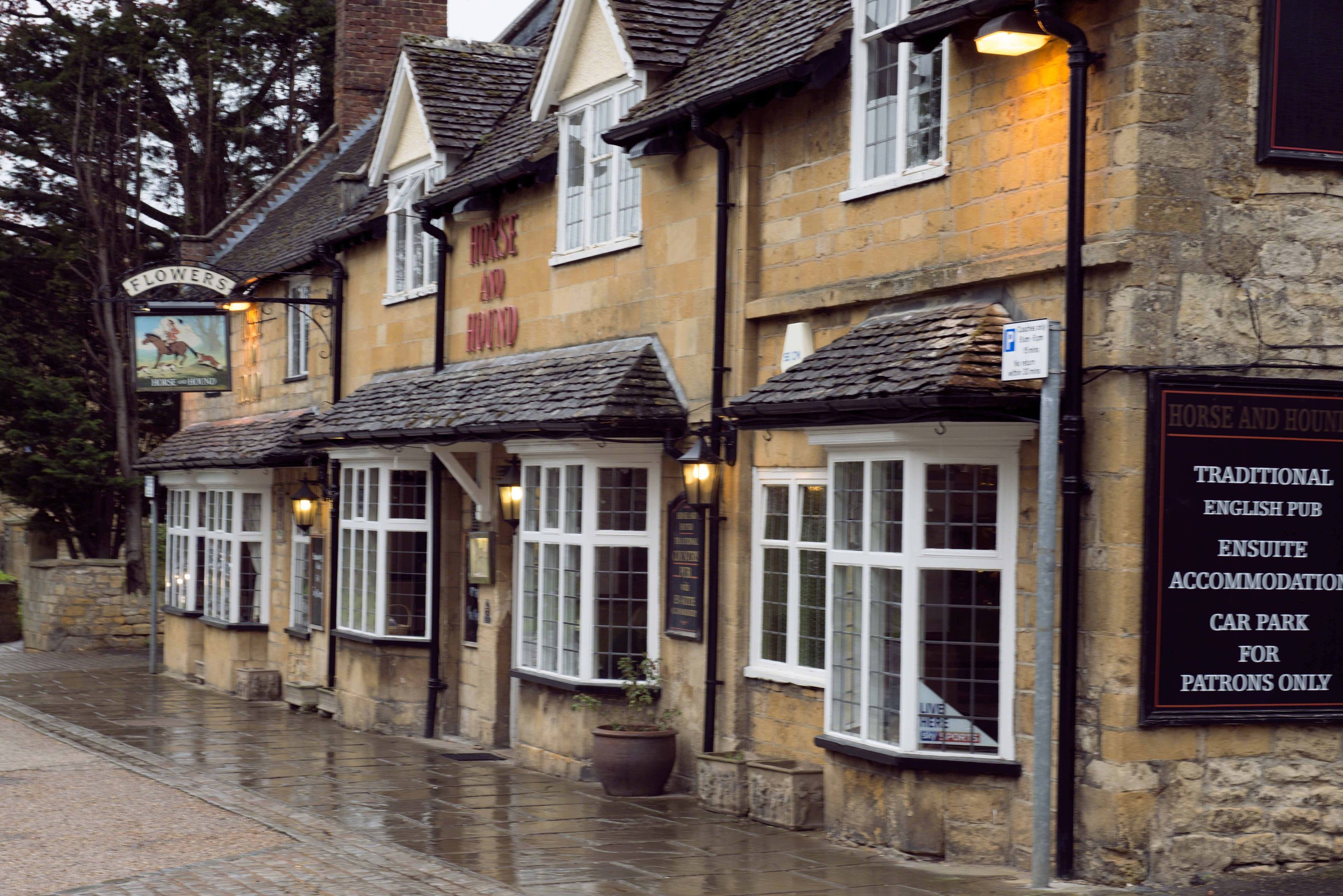
The Horse and Hound Pub glows in a late-day shower
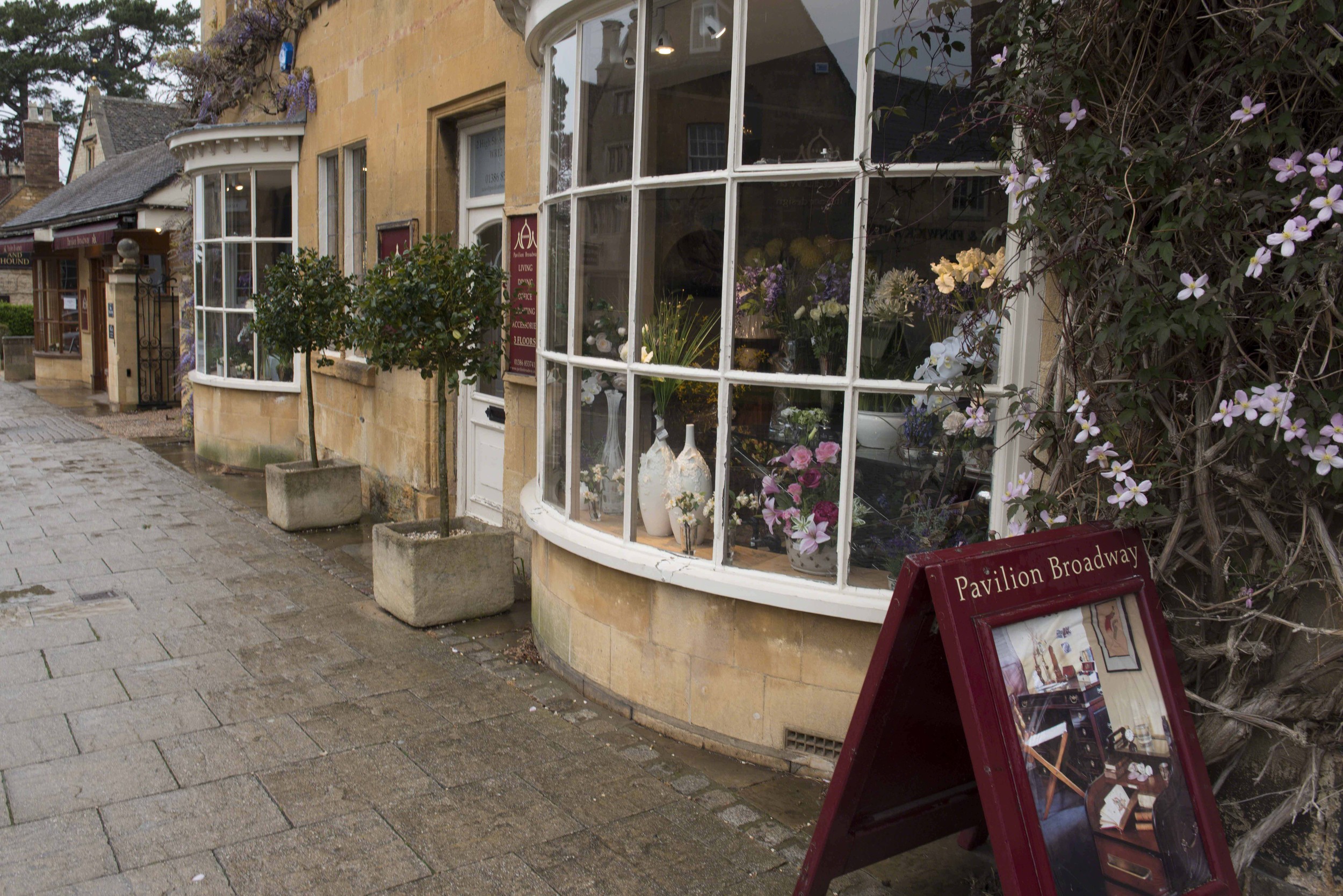
Each shop in Broadway is loaded with temptations in the windows.
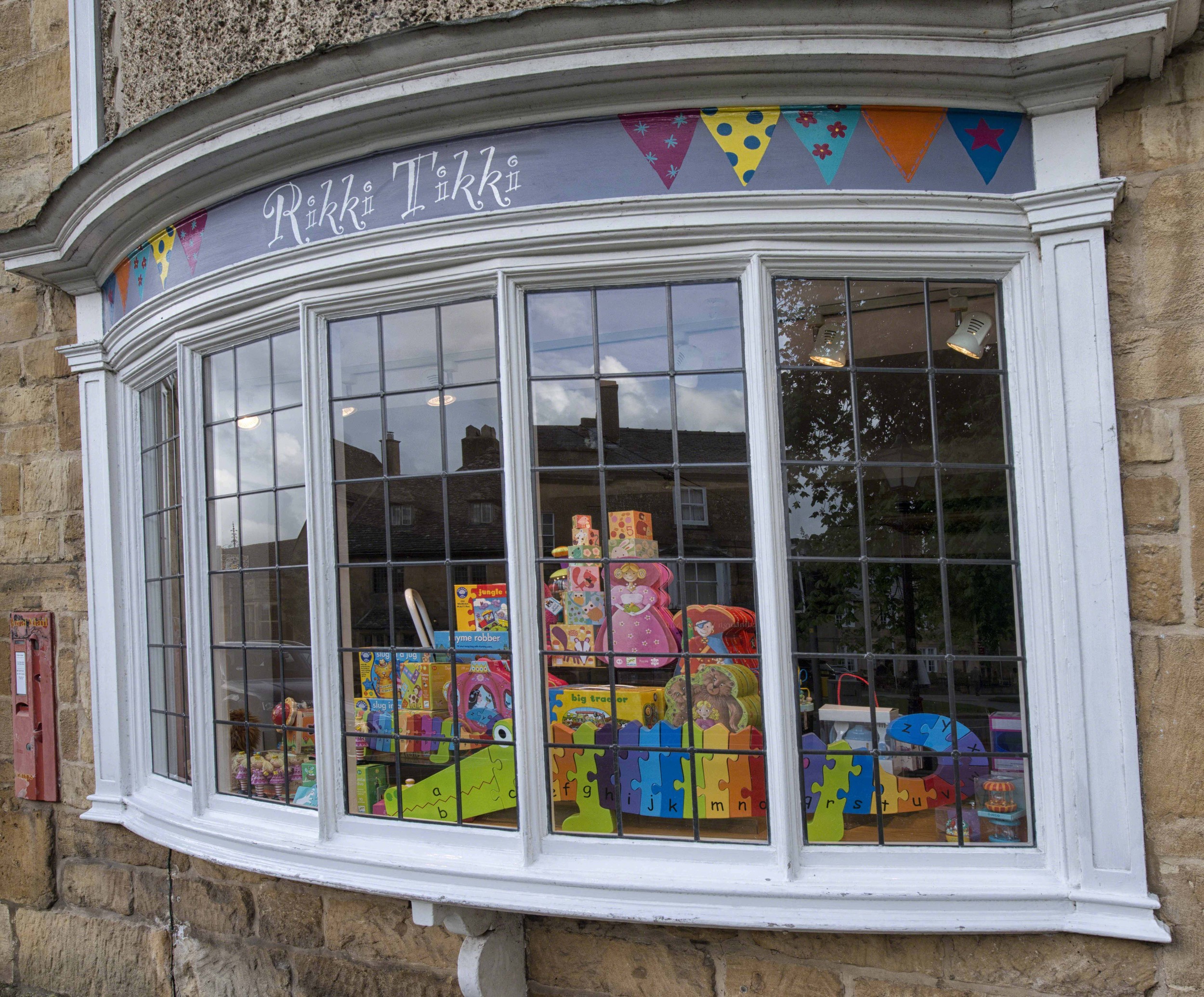
What child (or adult) could resist the lure of the colorful Rikki Tikki toy shoppe?

Even the Kitchen Shop displays its wares invitingly.
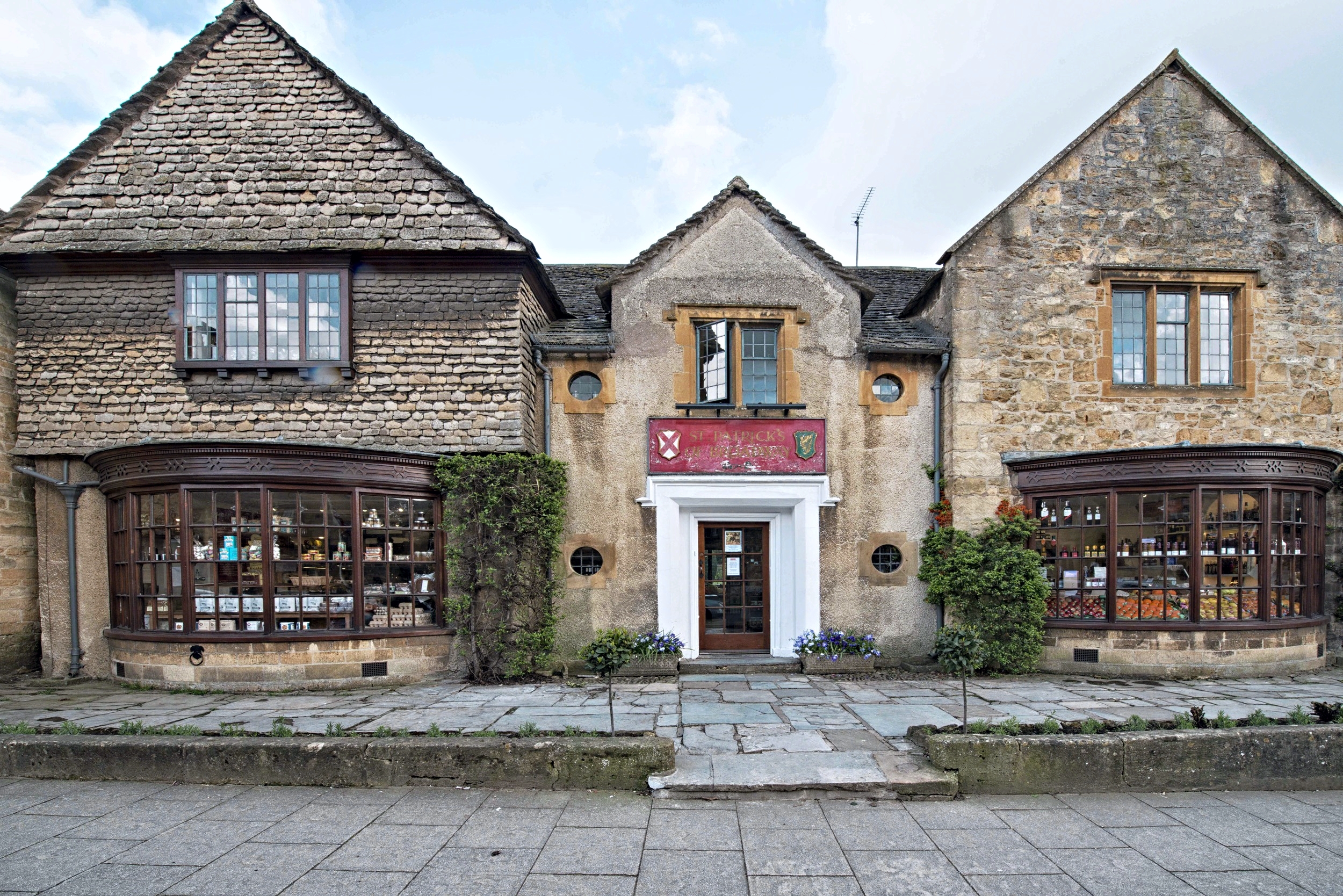
The Broadway Deli in its new location in the Spring of 2014.
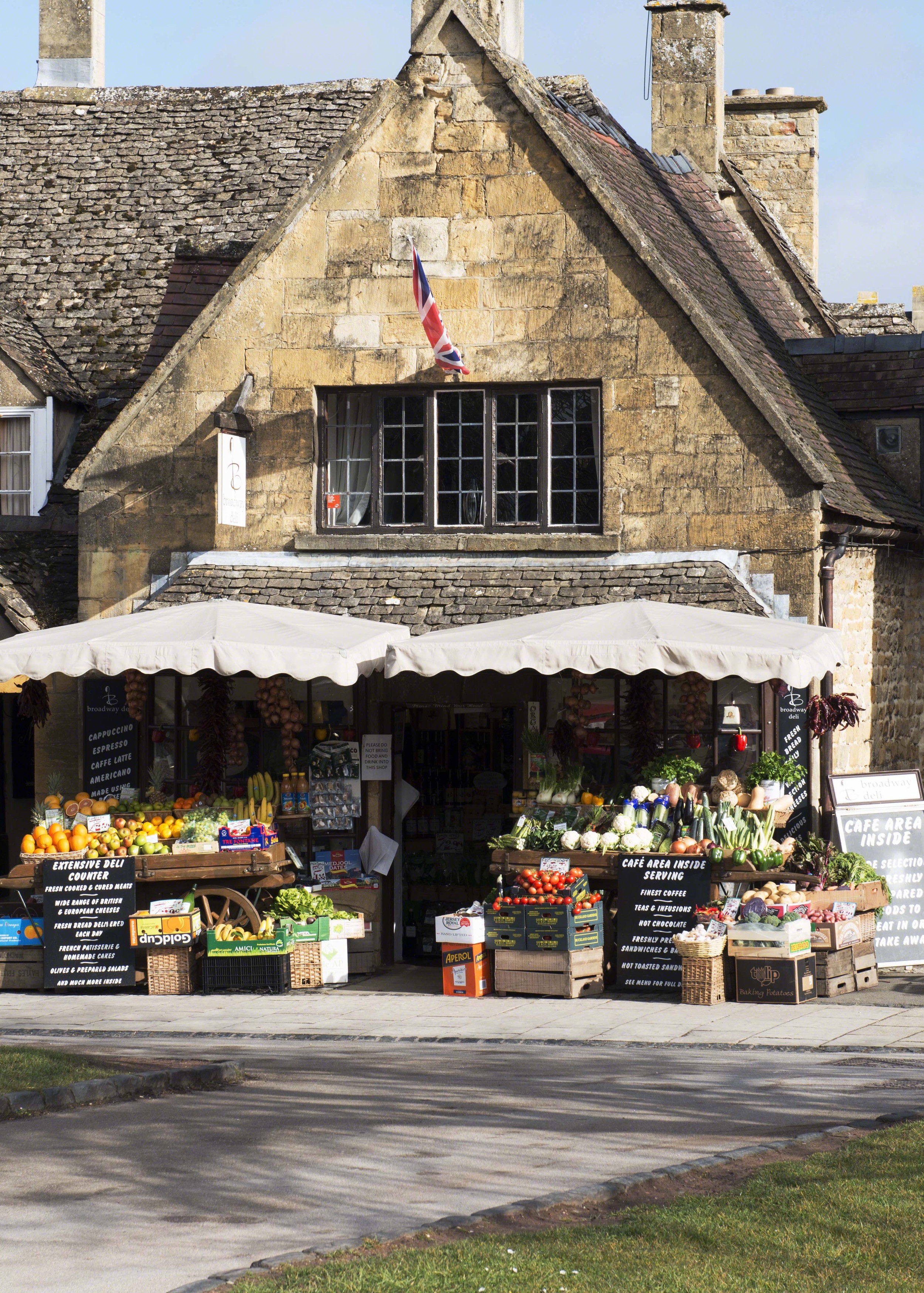
The Broadway Deli in its earlier and smaller location.
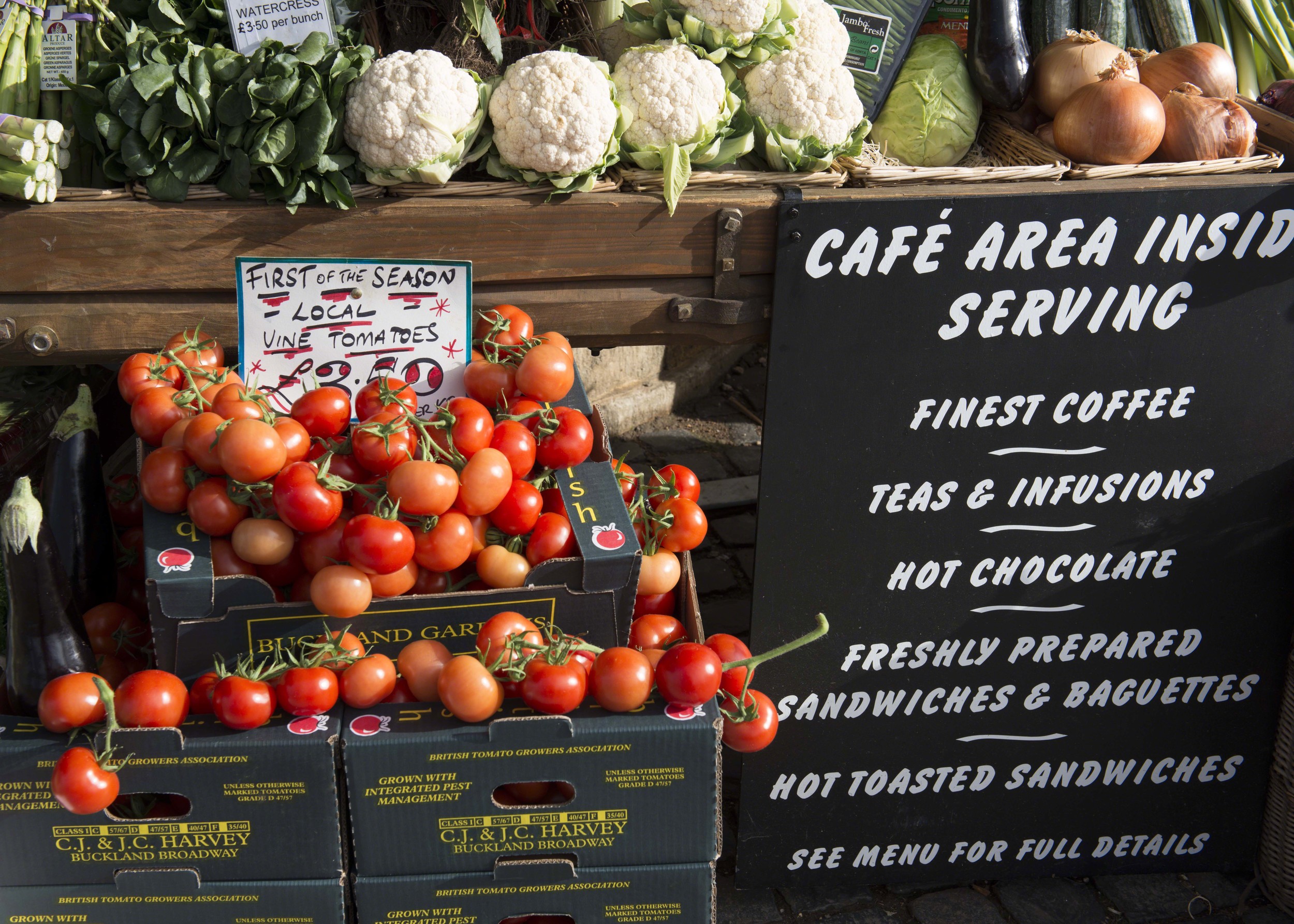
The produce is as irresistible as the inviting cafe.
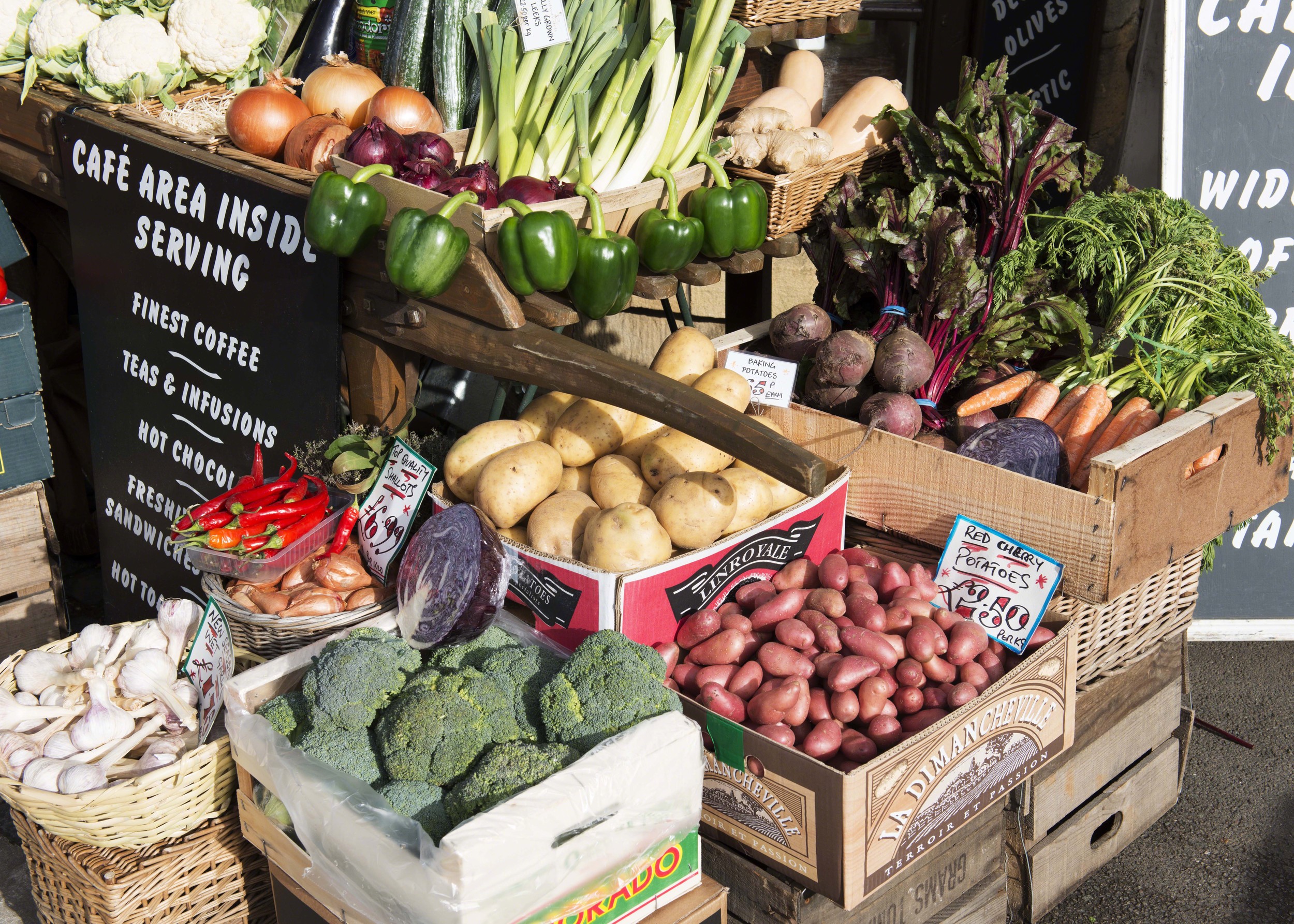
More produce is simply, yet attractively displayed.
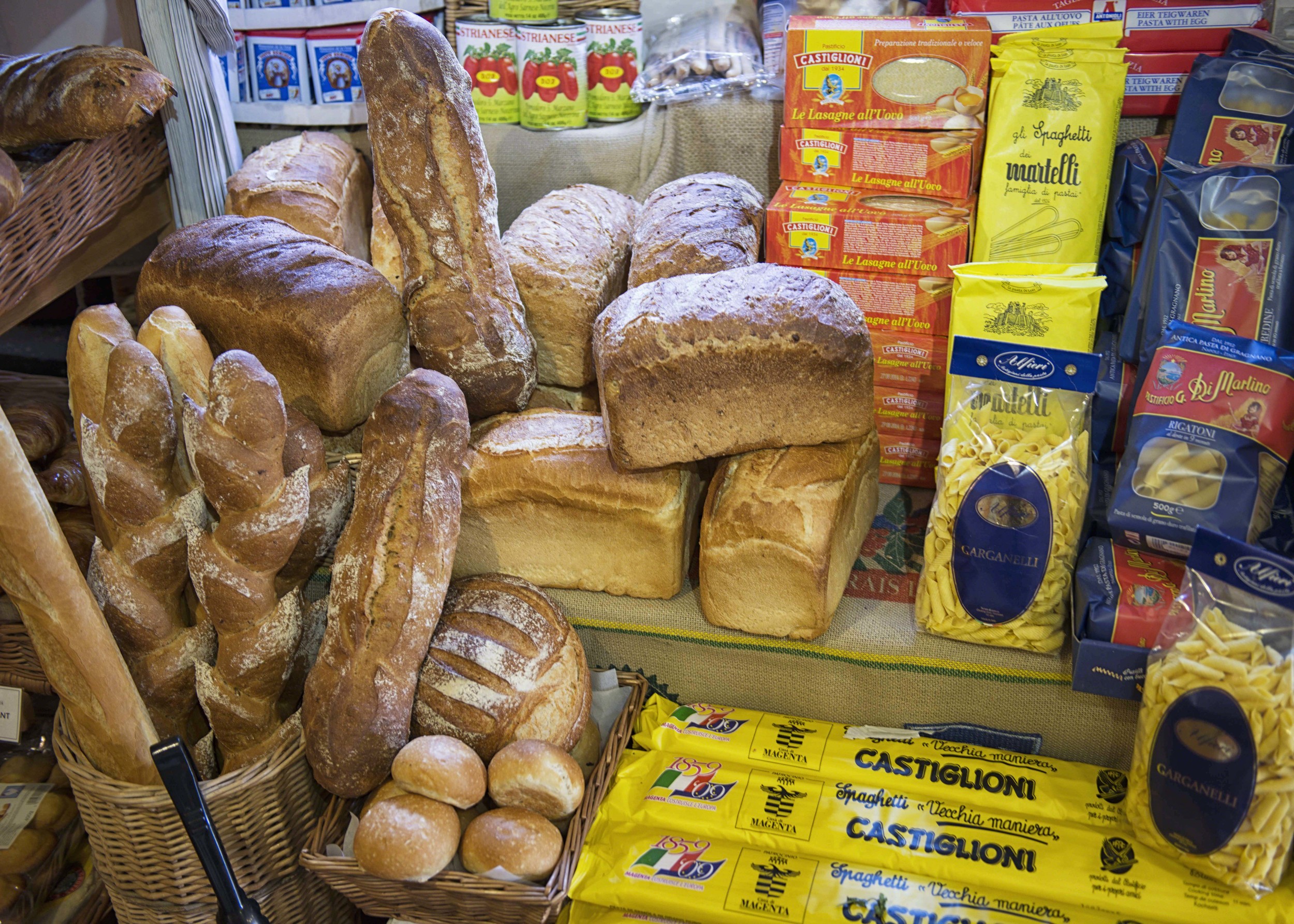
Breads, crackers, cheeses and meats as well as various condiments and supplies are displayed in the Broadway Deli.
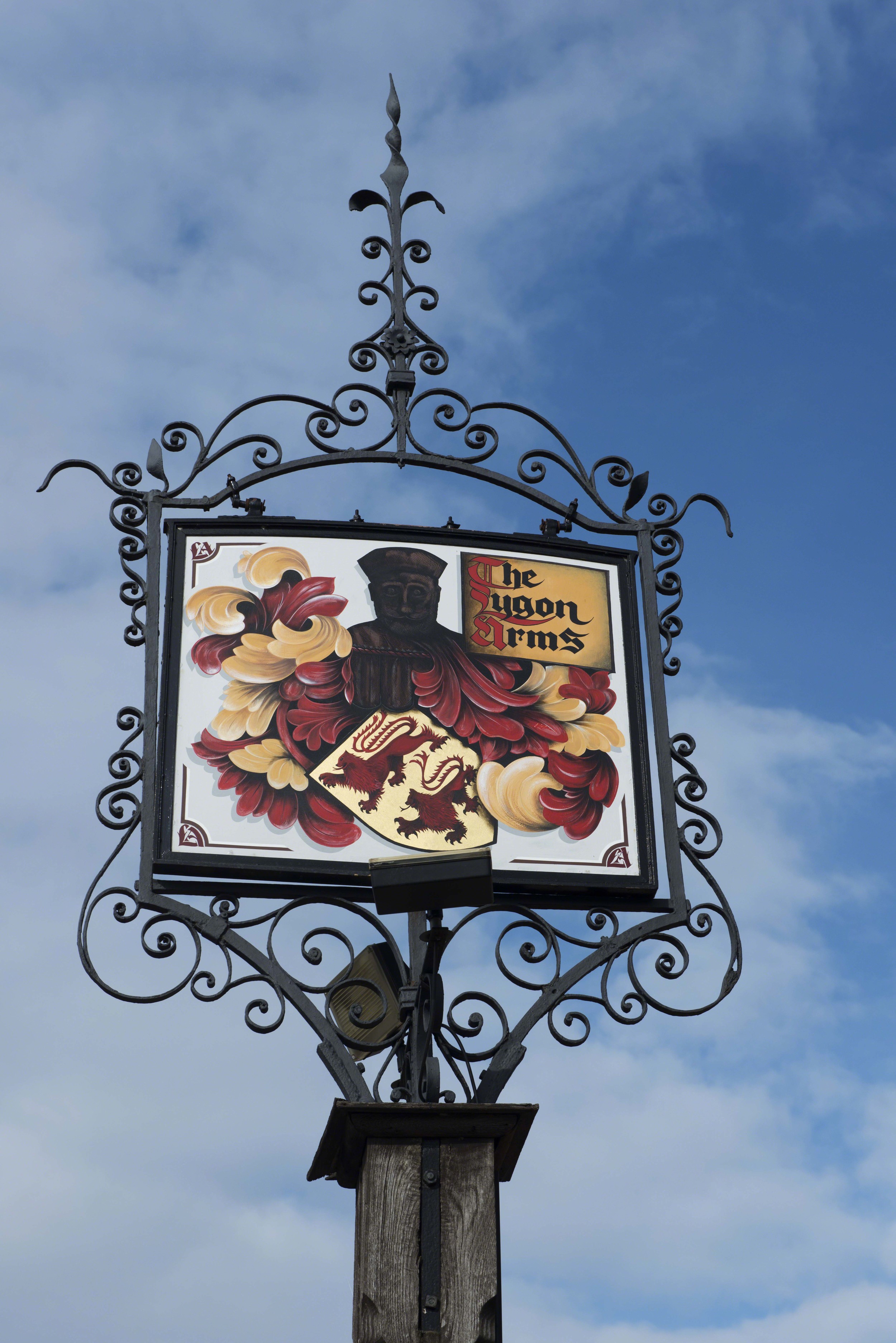
Back outside, the sky has cleared and the Lygon Arms Sign is colorful against the sky

Call it a tower, a castle, or a folly, Broadway Tower is a delight.
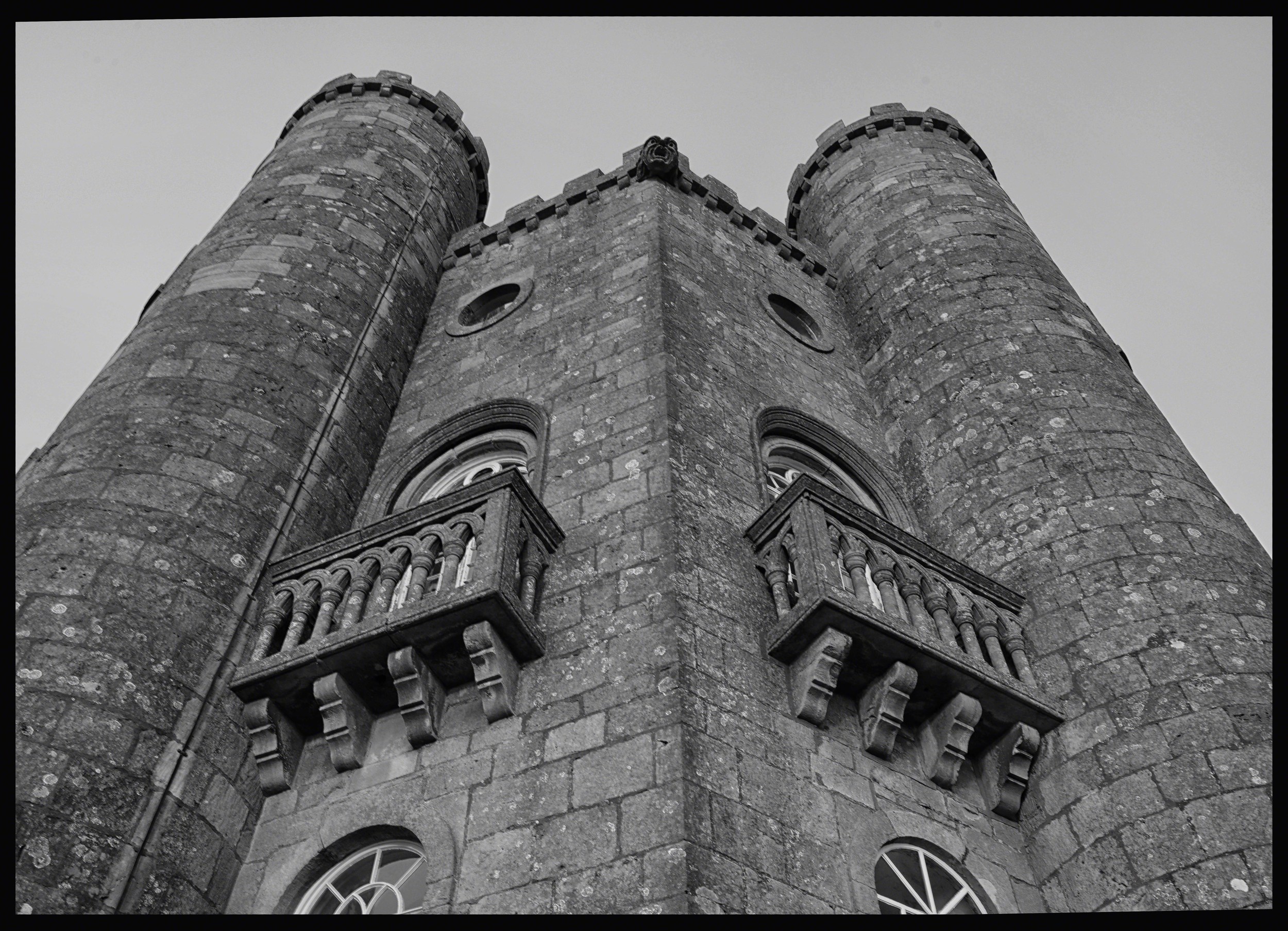
The tower gives an impression as a rounded structure, but is only rounded on its turrets
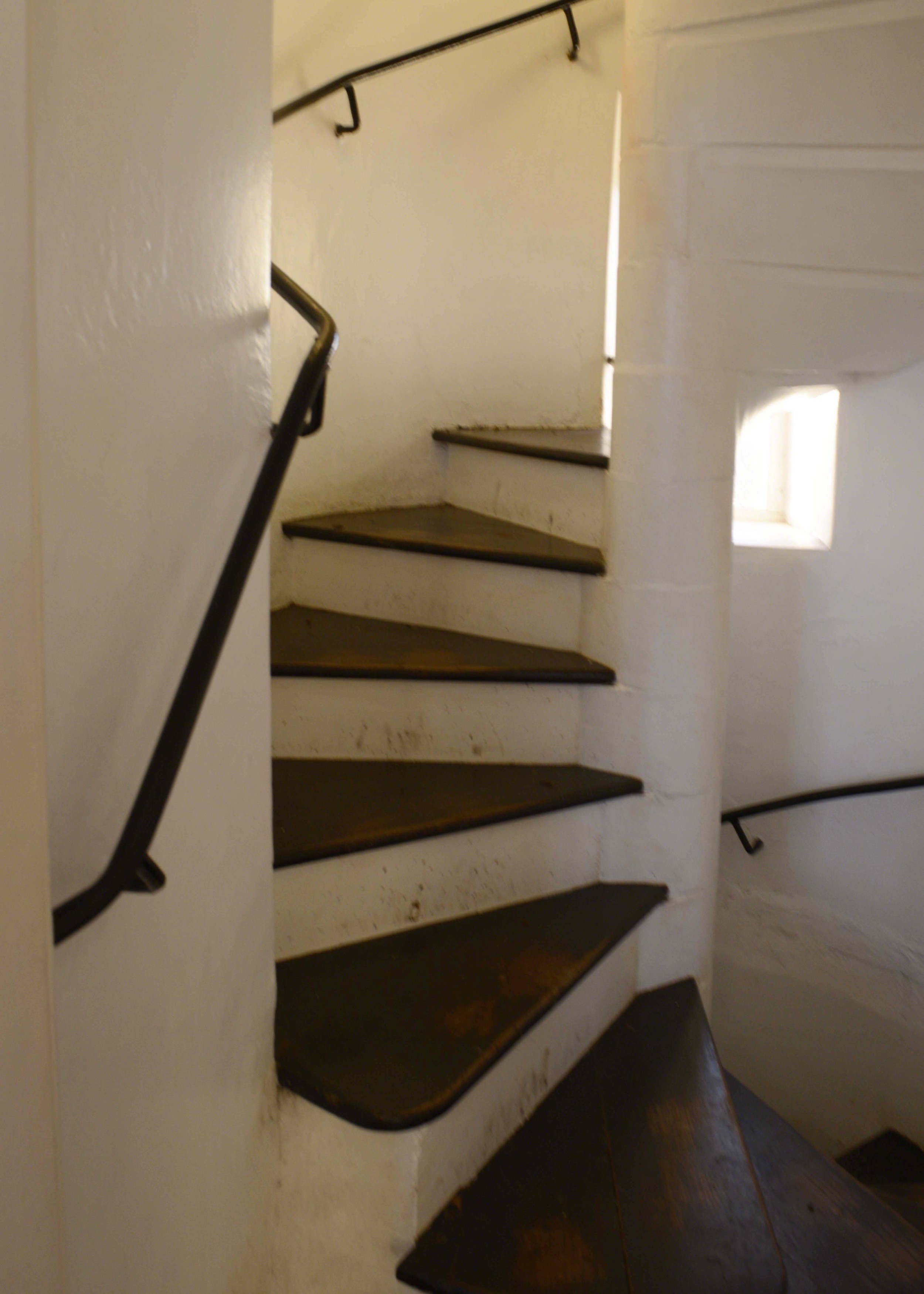
The inviting stairway ascends floor by floor to the windy top.
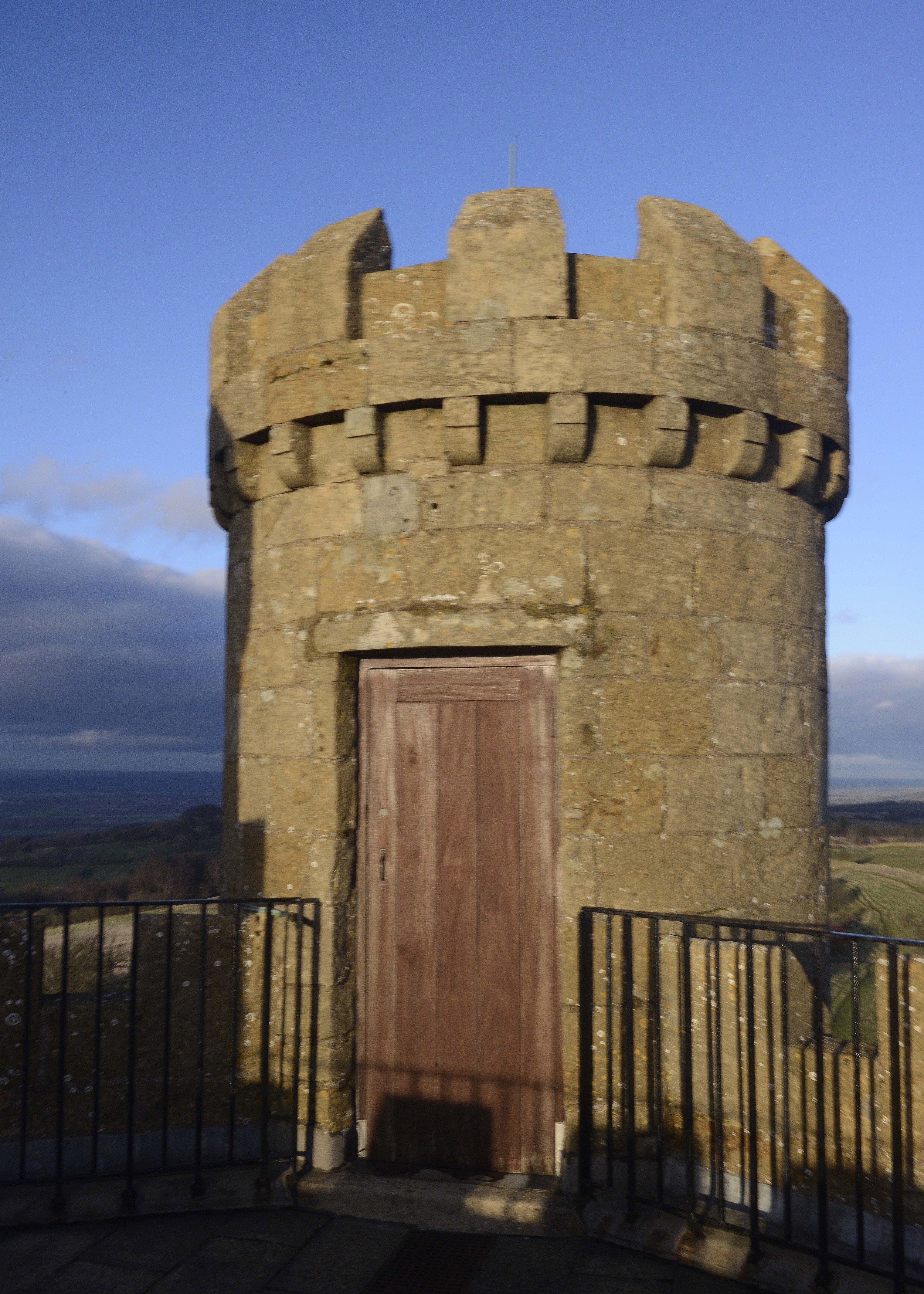
The crenallated turrets cap the tower which was designed by landscape architect, Capability Brown for George William 6th Earl of Coventry and was completed in 1798.
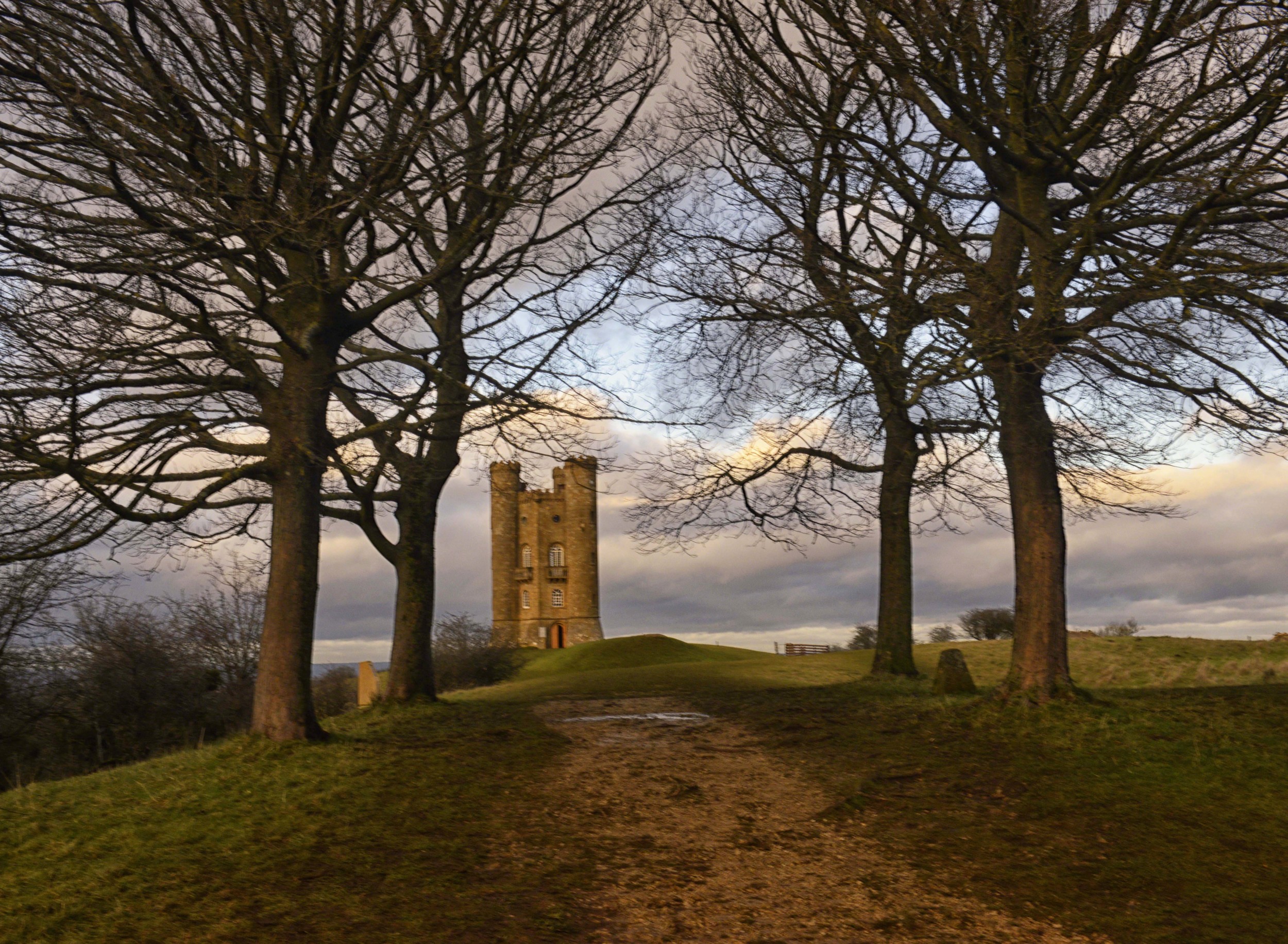
Broadway Tower sits at 1,024 feet above sea level at its base and is visible for miles around.
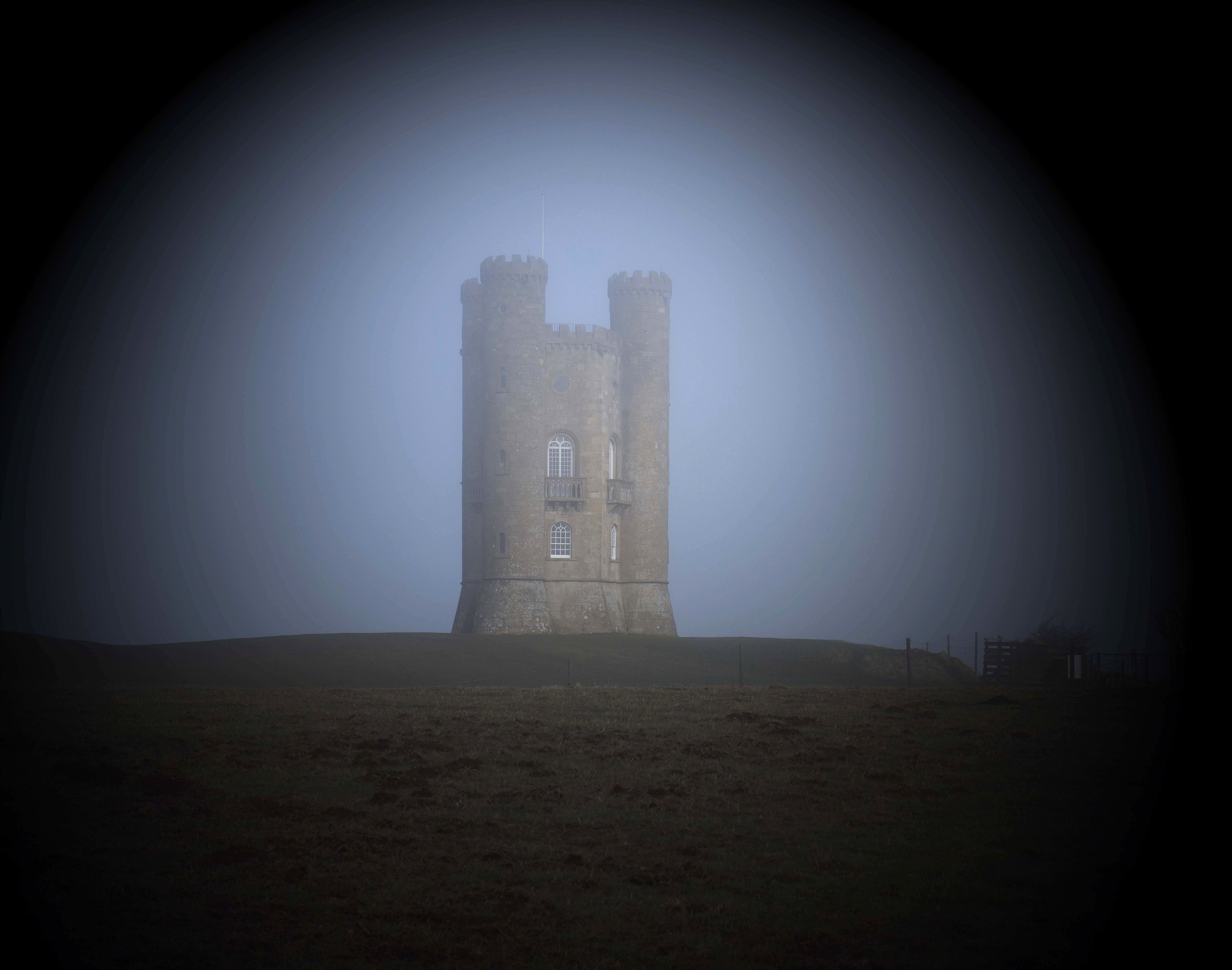
Broadway Tower, April 2013, when snow drifts edged the side of the road.
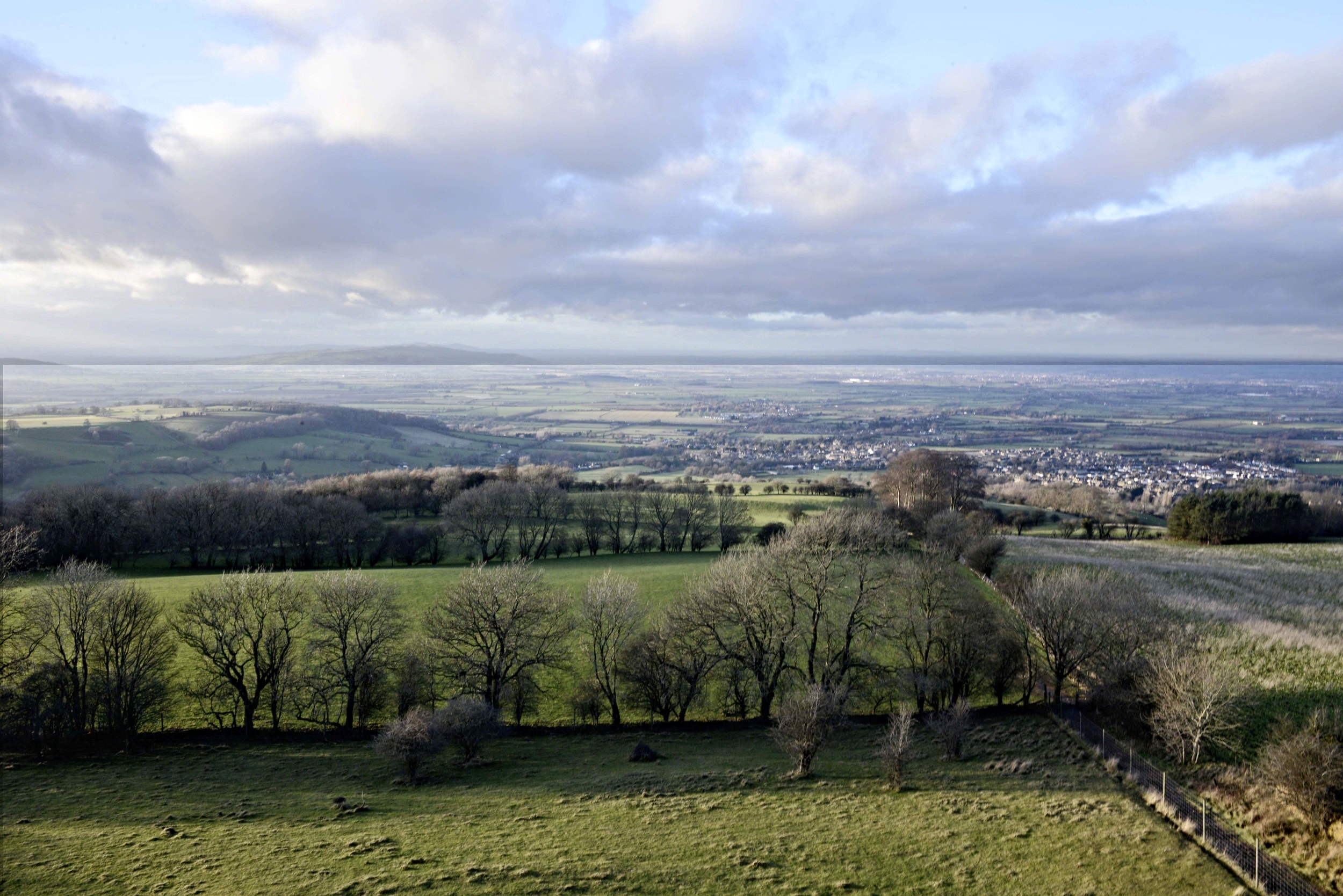
The views from the top of Broadway Tower are invitingly picturesque.

The Tower itself is 65 feet high and is both a visitor and walker destination.
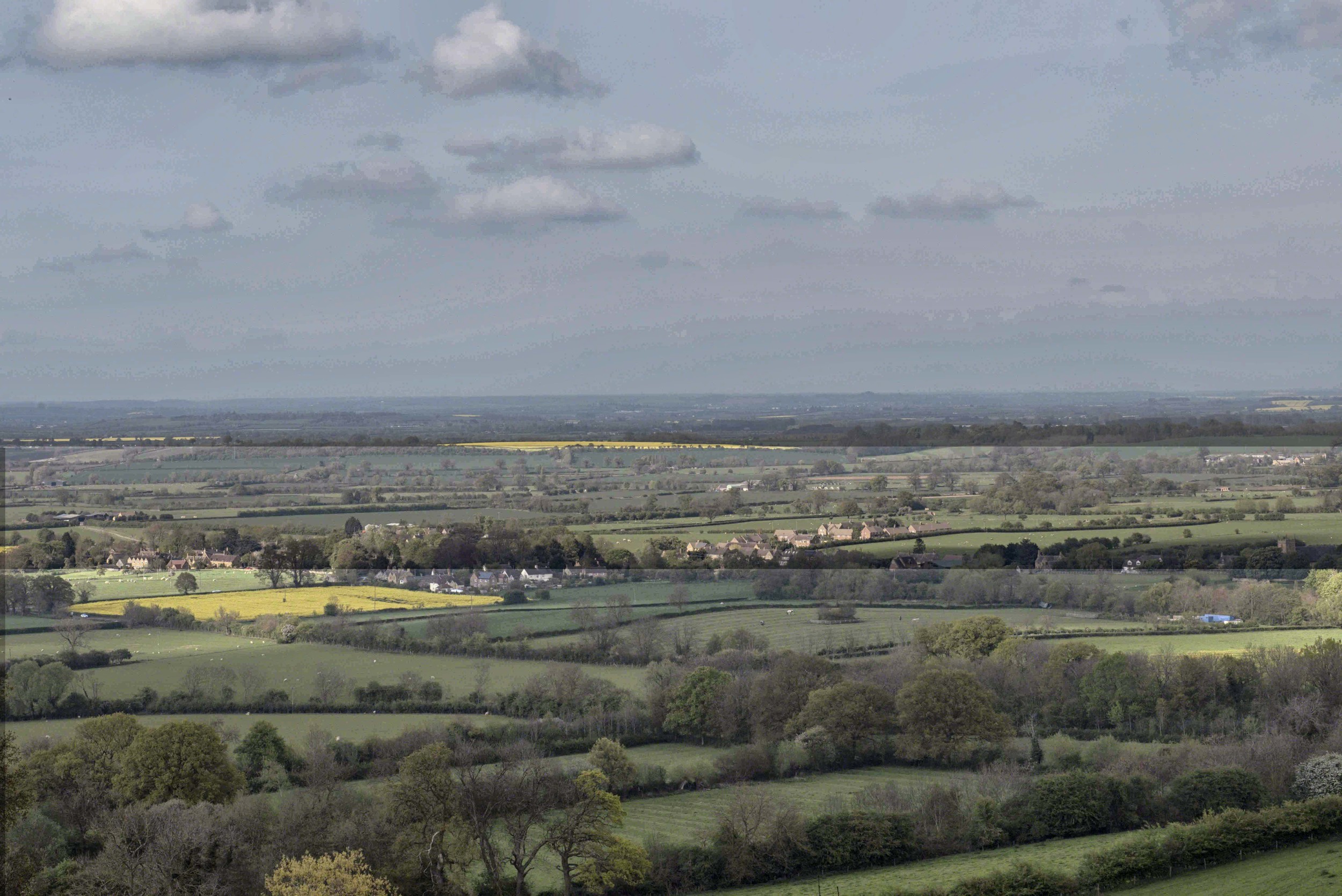
Looking out over the countryside near Broadway, I am reminded what a special part of the world the Cotswolds are and how I never tire of their villages and countrysides.
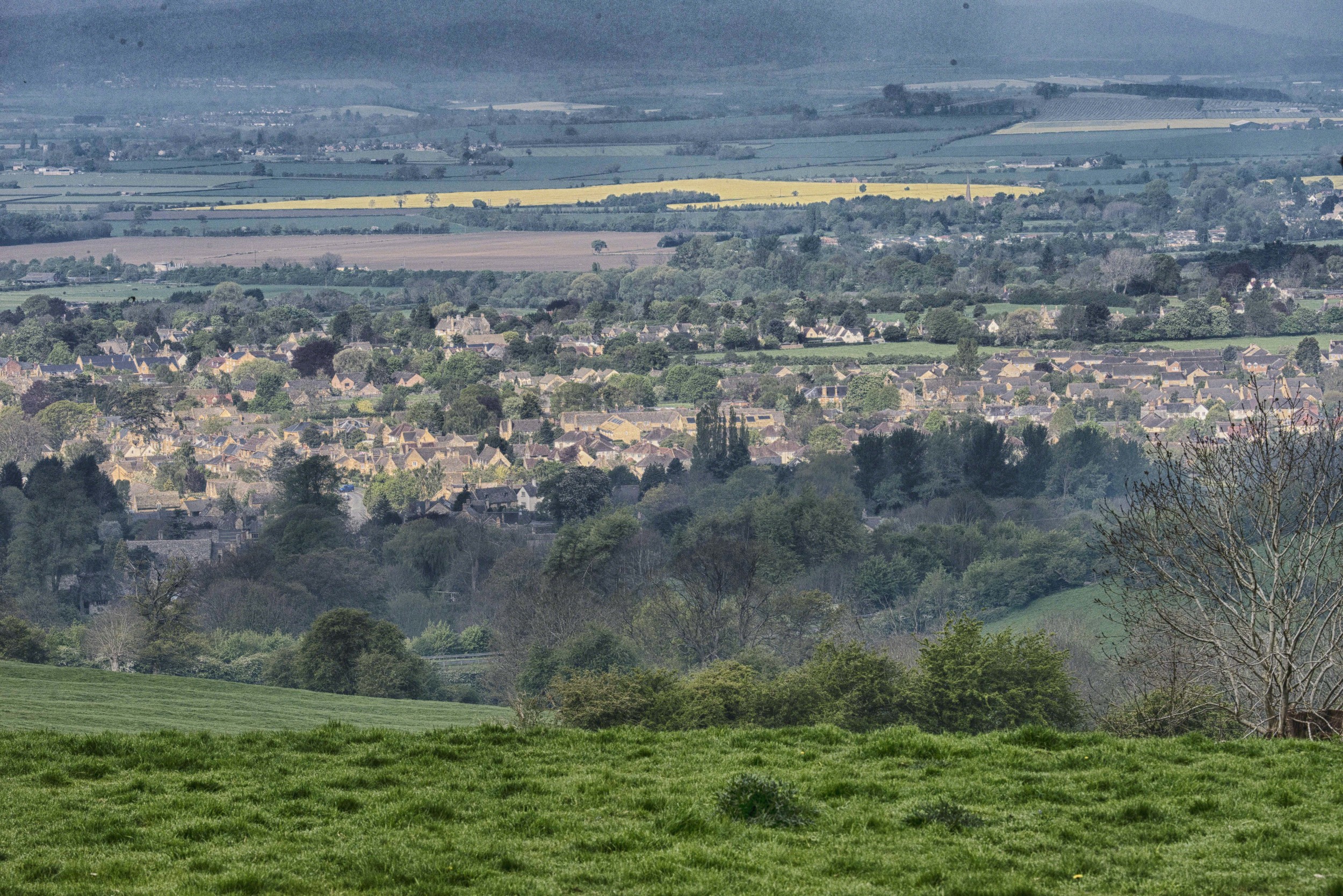
The view of Broadway from nearby Willersley Hill. is charming even with a light morning haze.
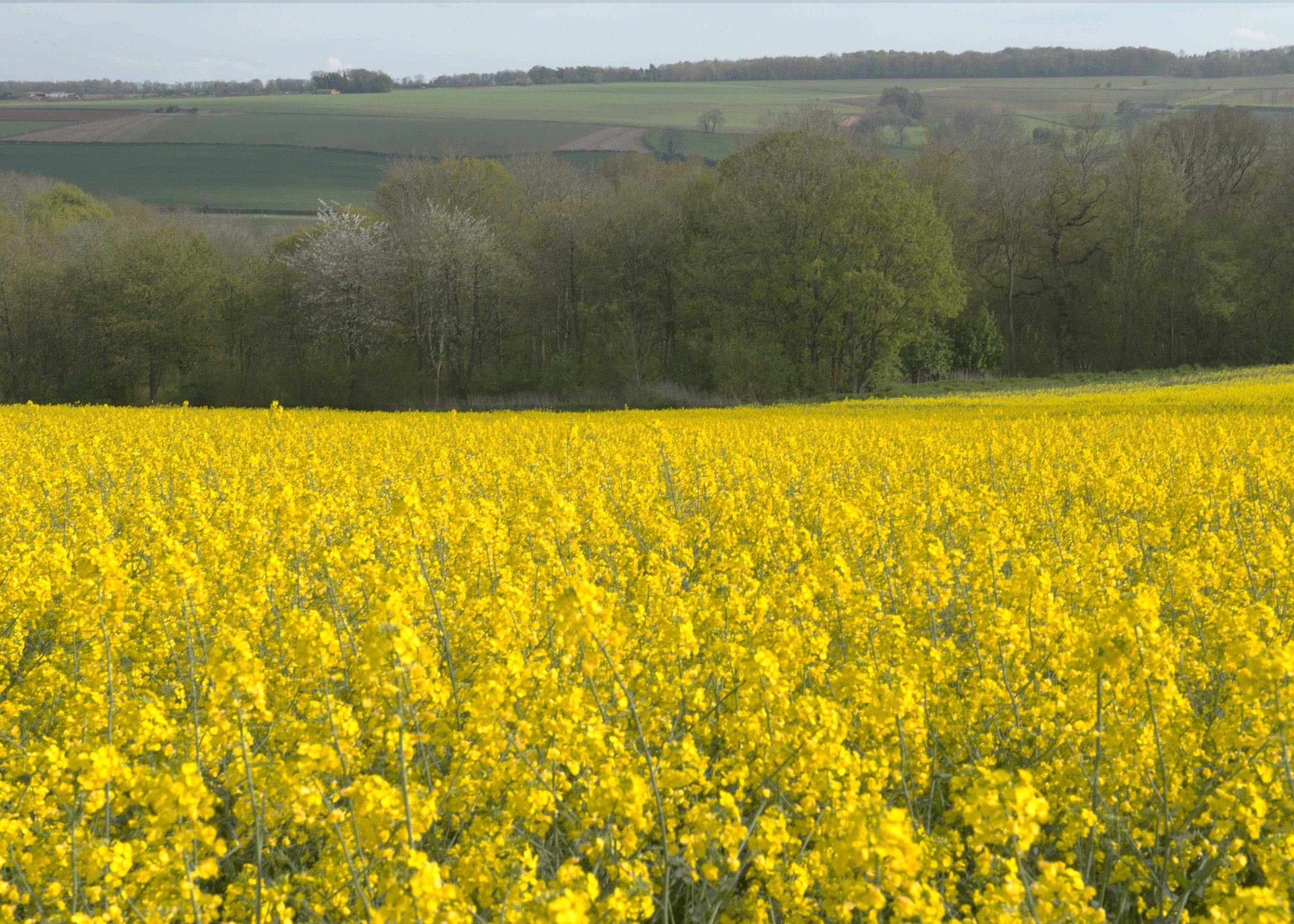
In May of 2014, the canola fields near Broadway were magnificent at peak color.
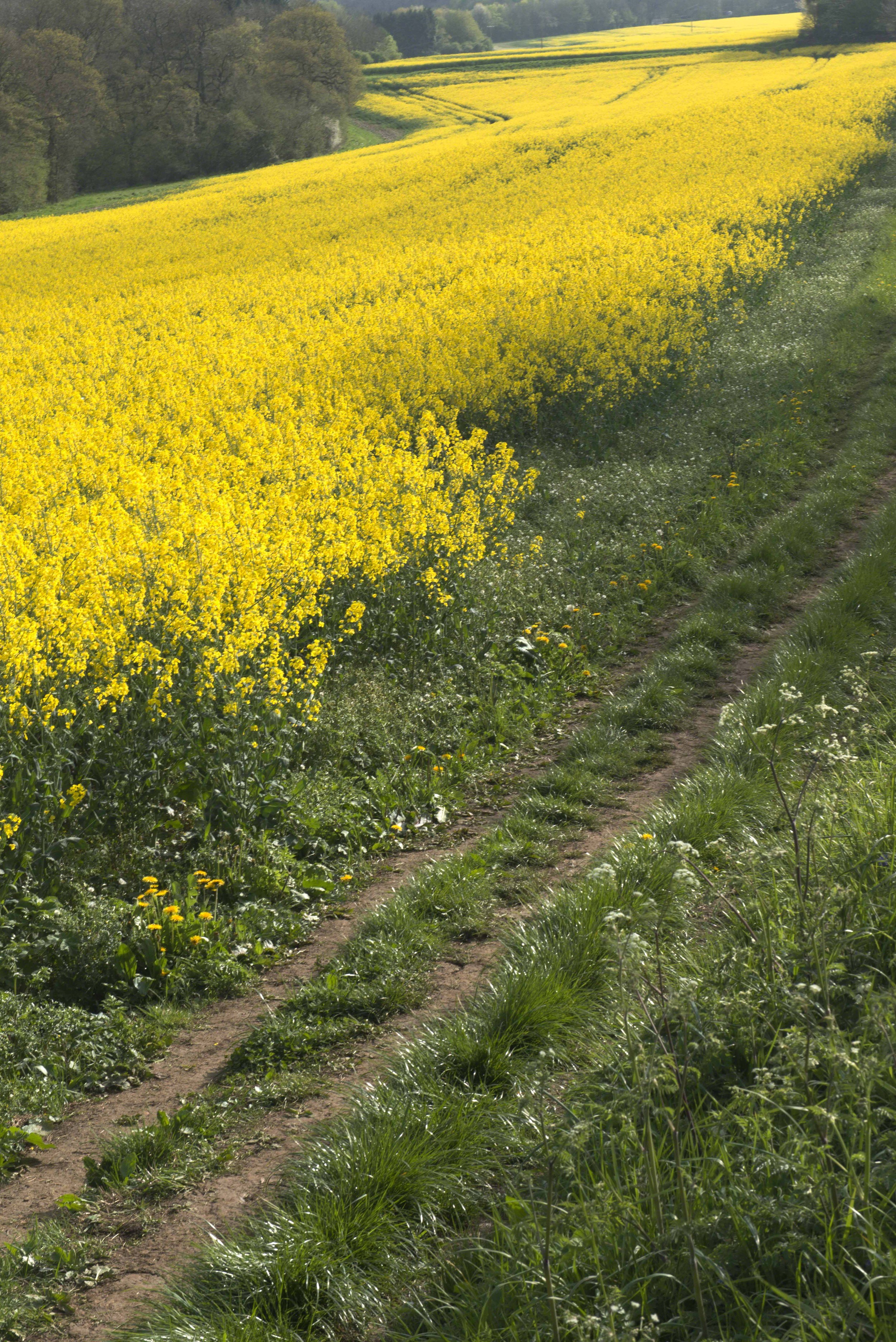
A long narrow field of canola or as it is called in the Cotswolds by its original name of rapeseed blooms cheerfully before pressing into oil.
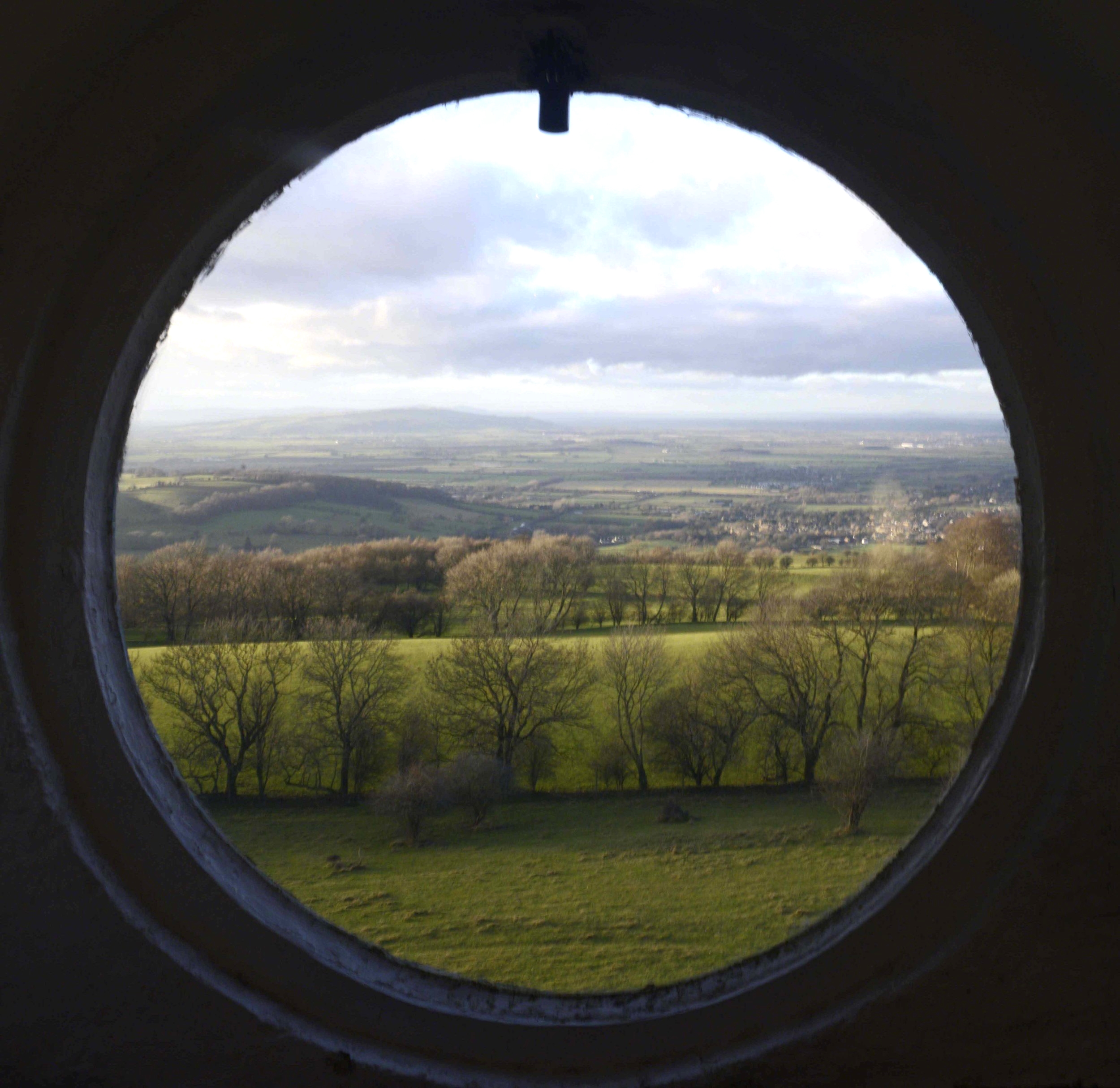
Leaving the Cotswolds for now, we have this "porthole" view of the countryside from Broadway Tower.










































































